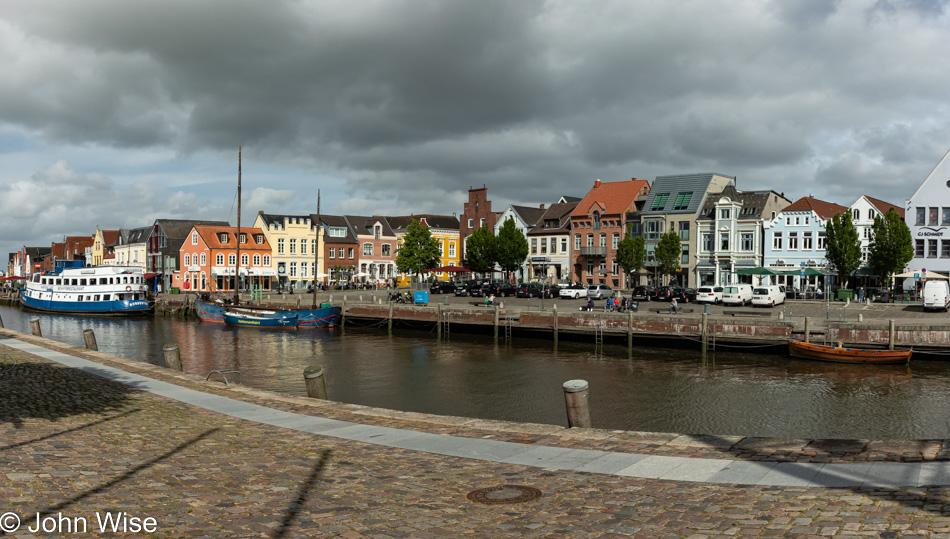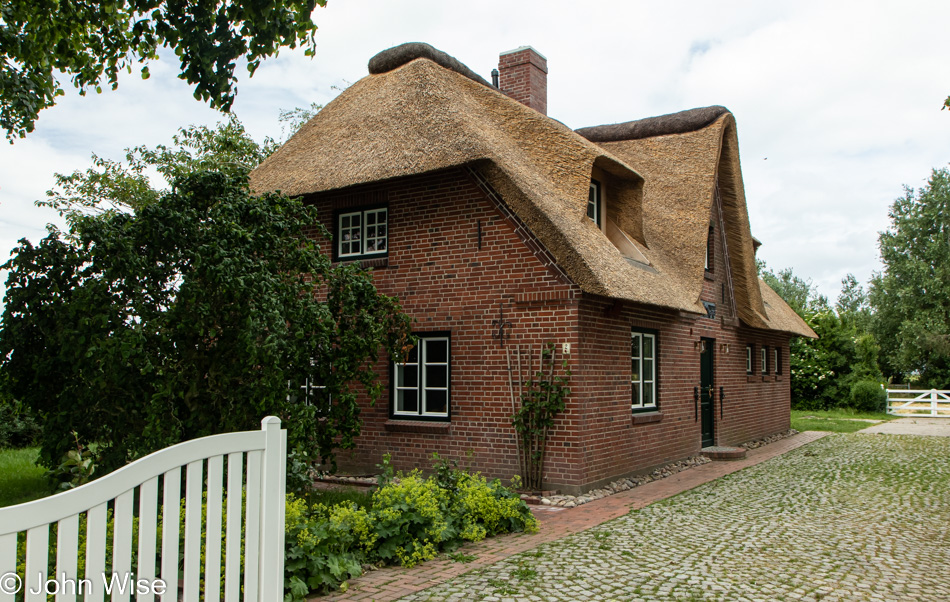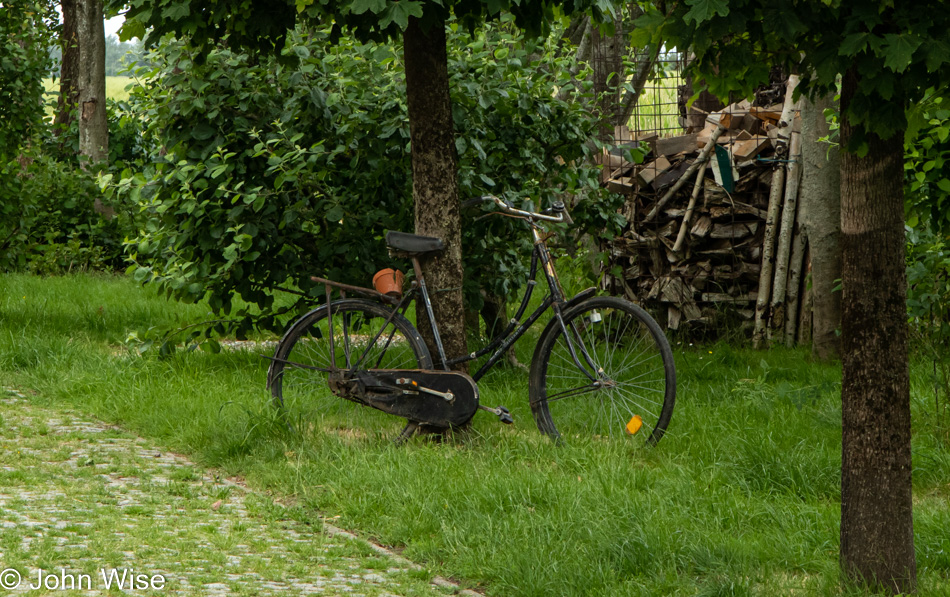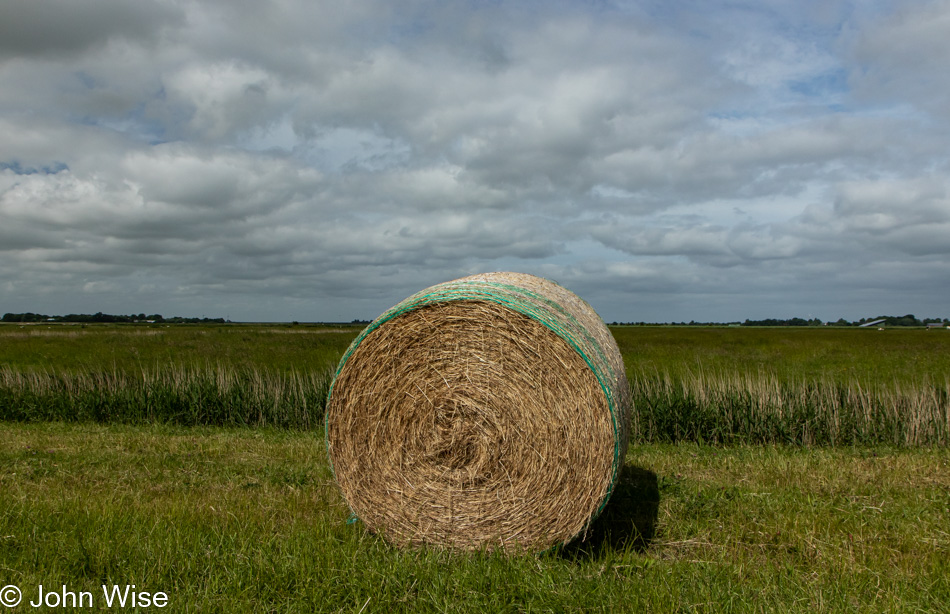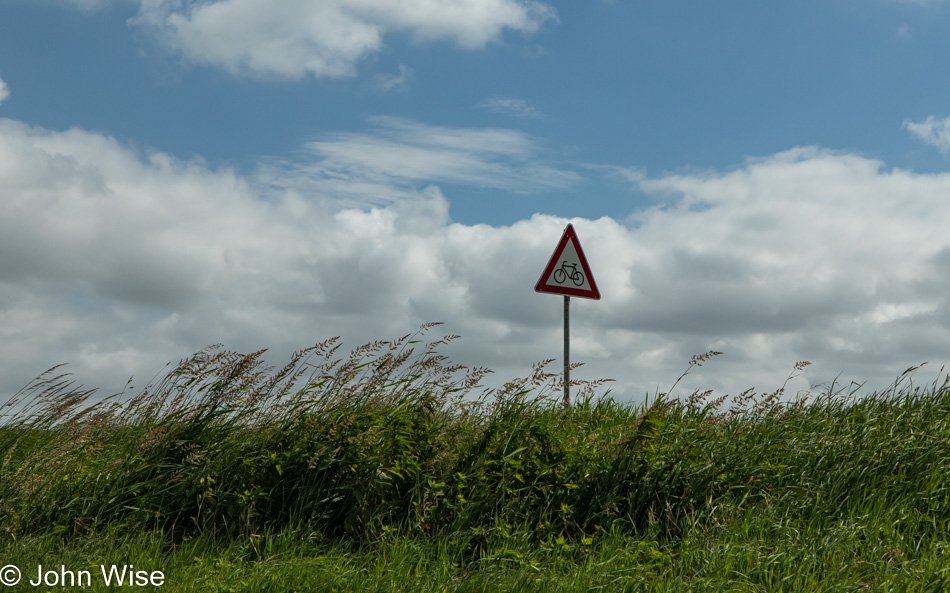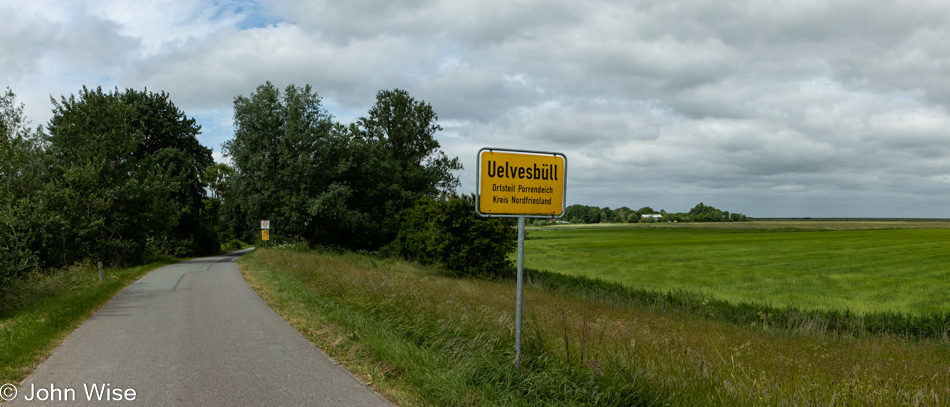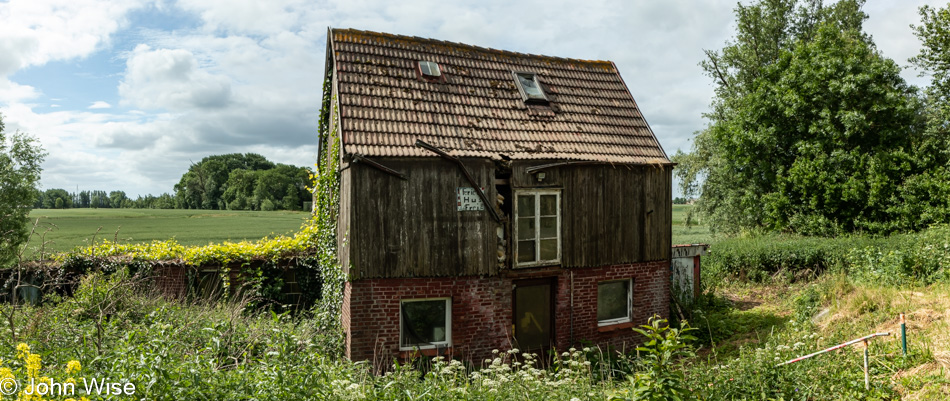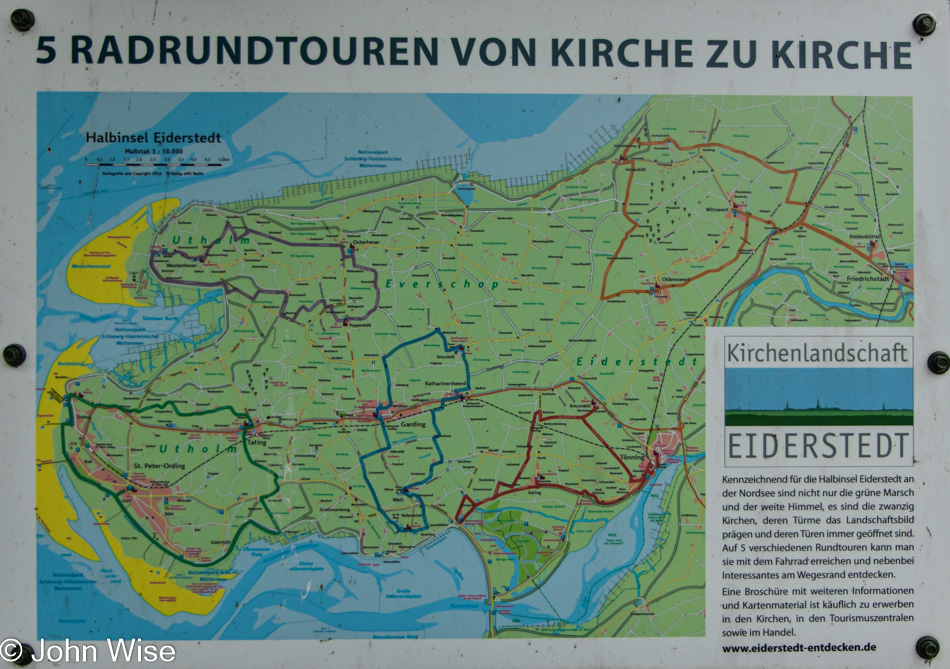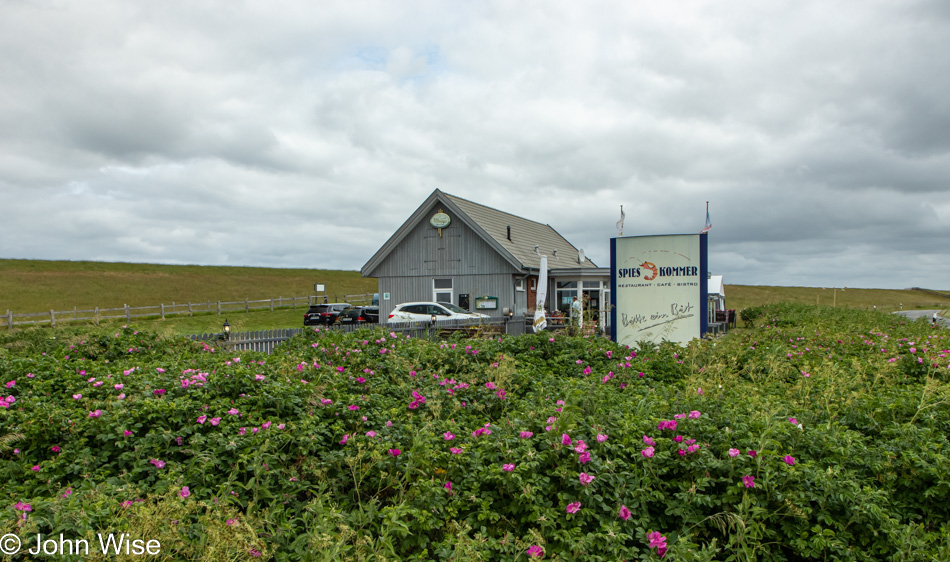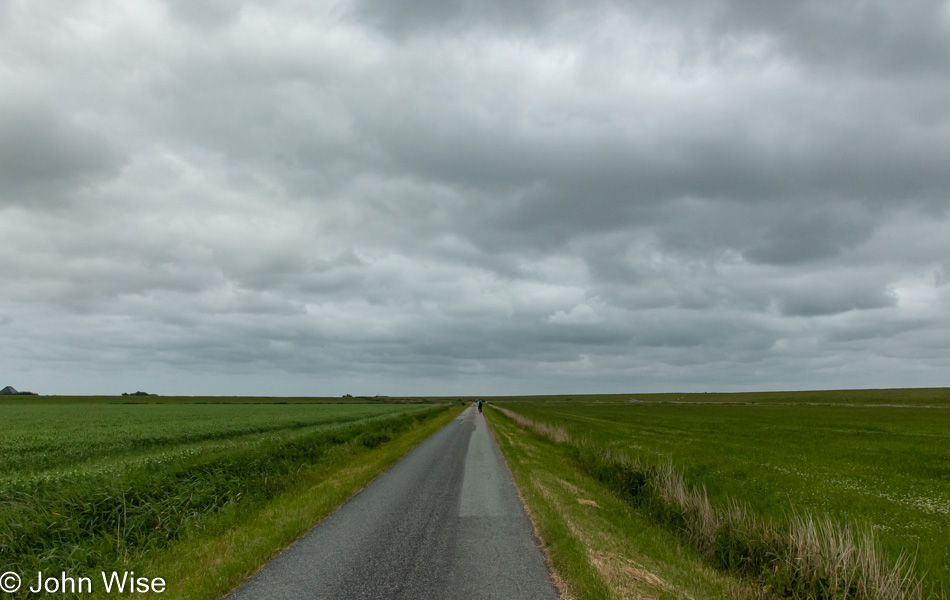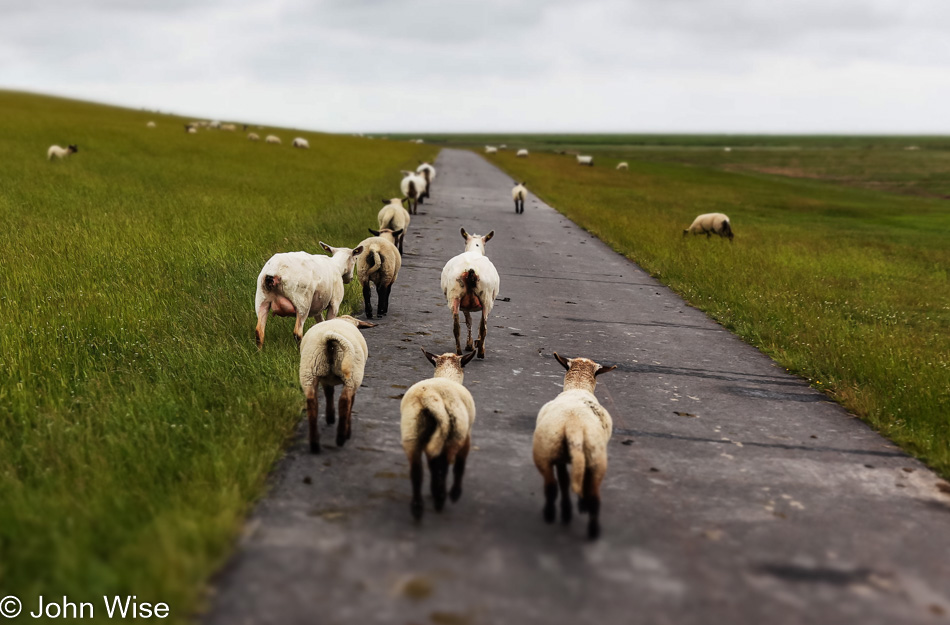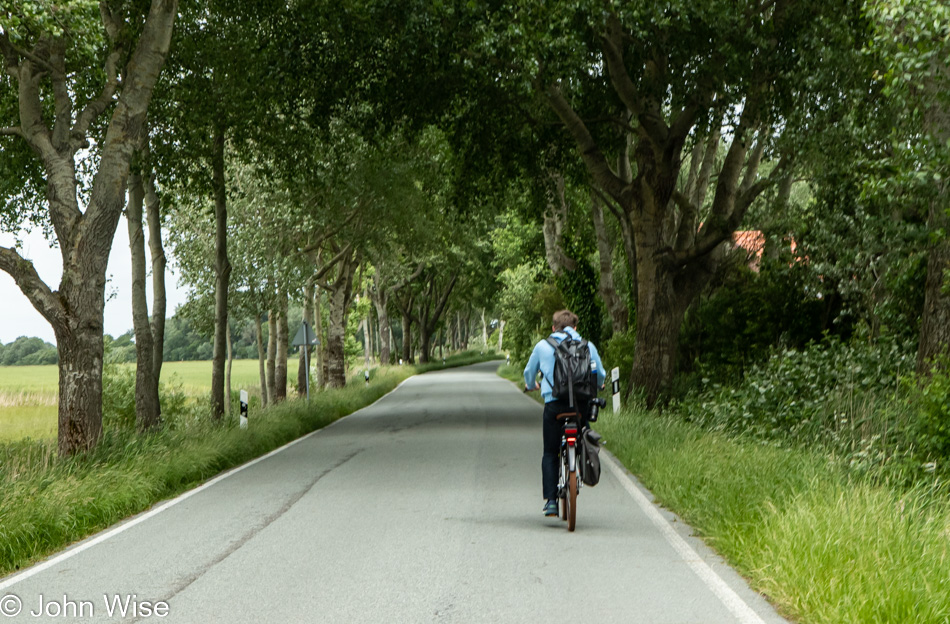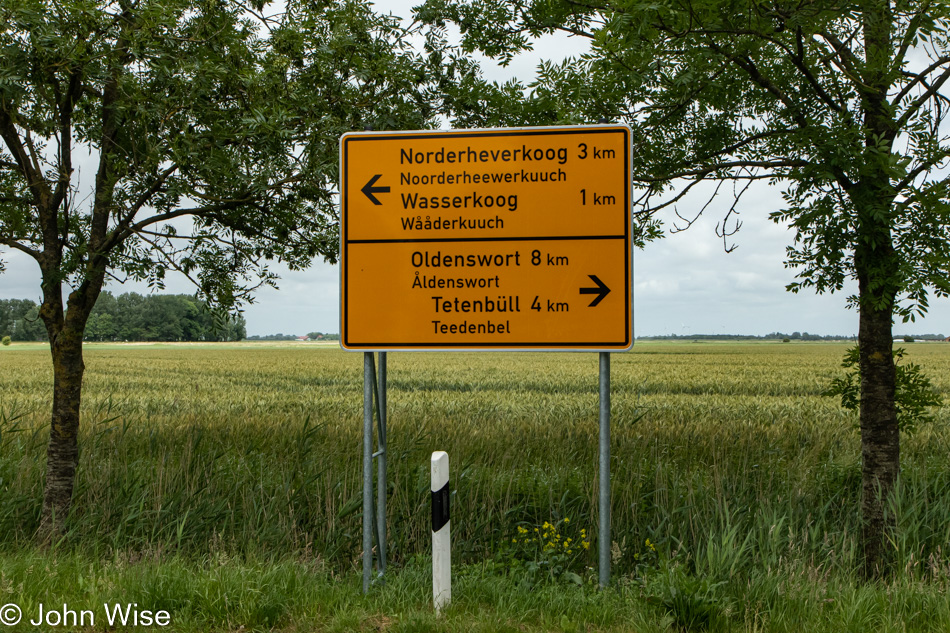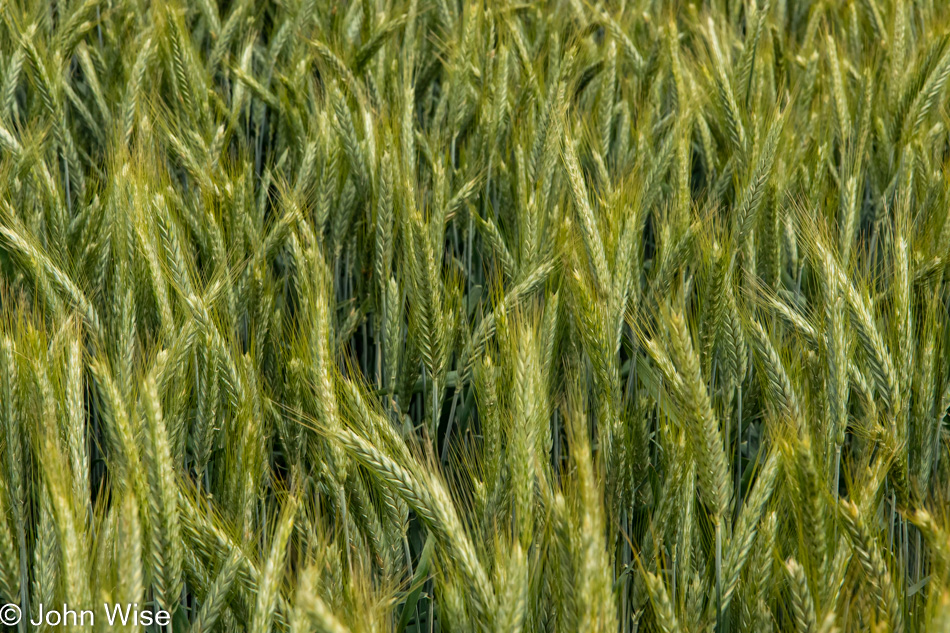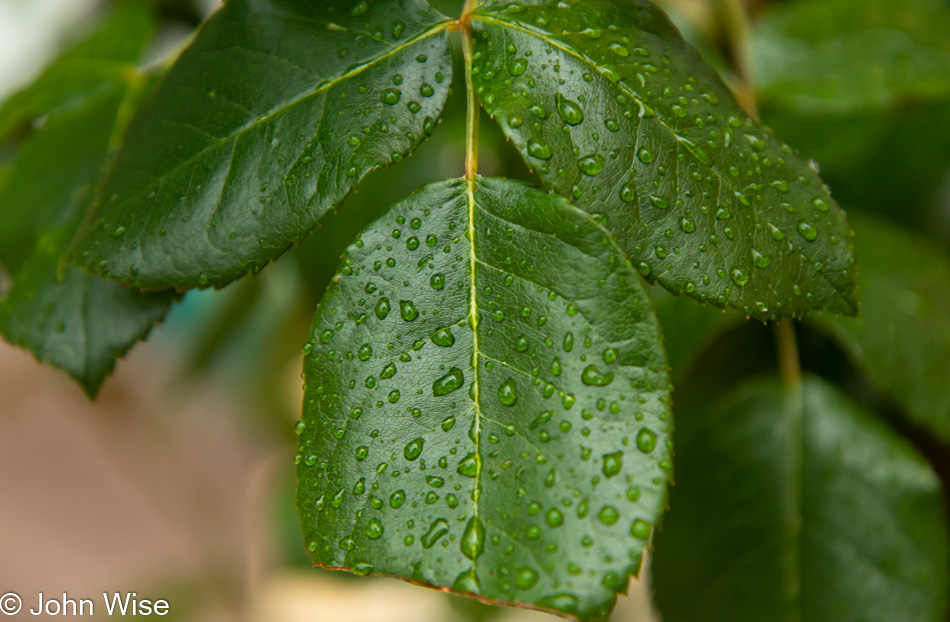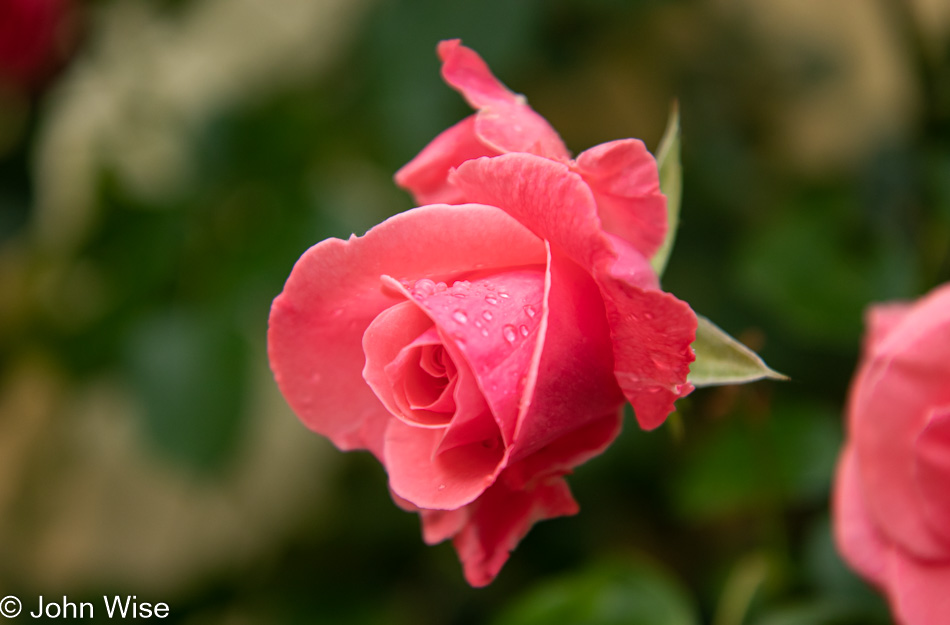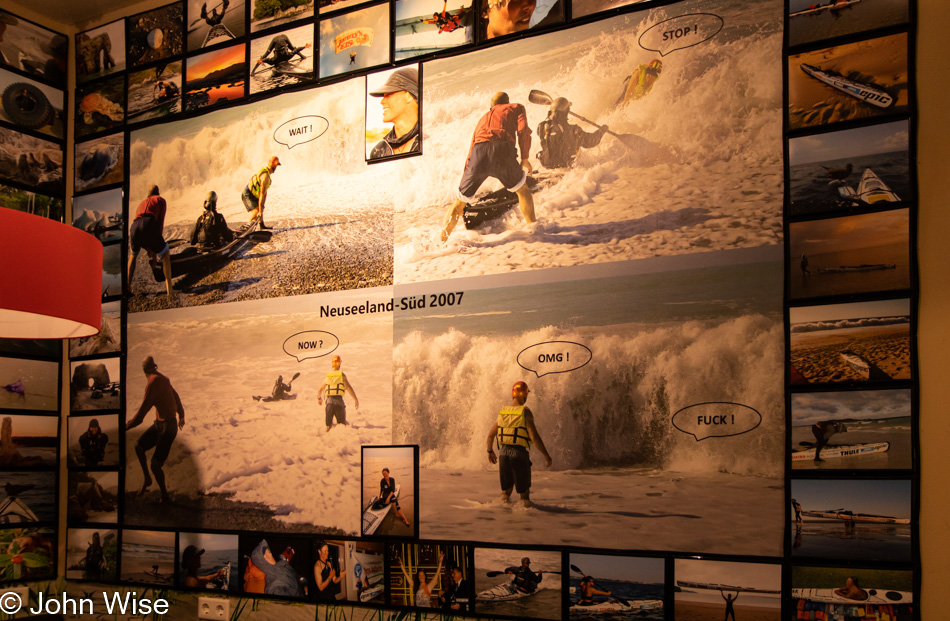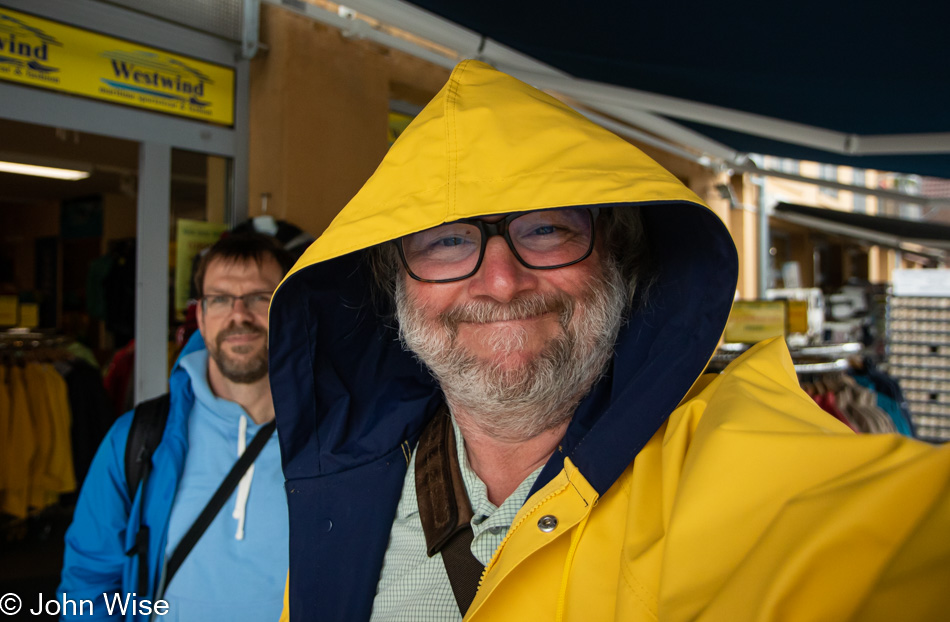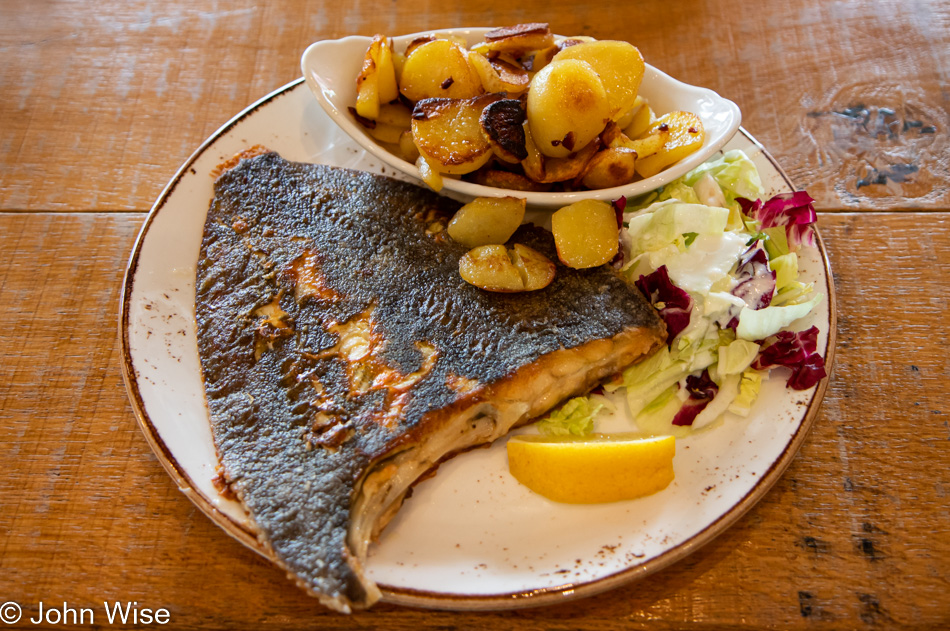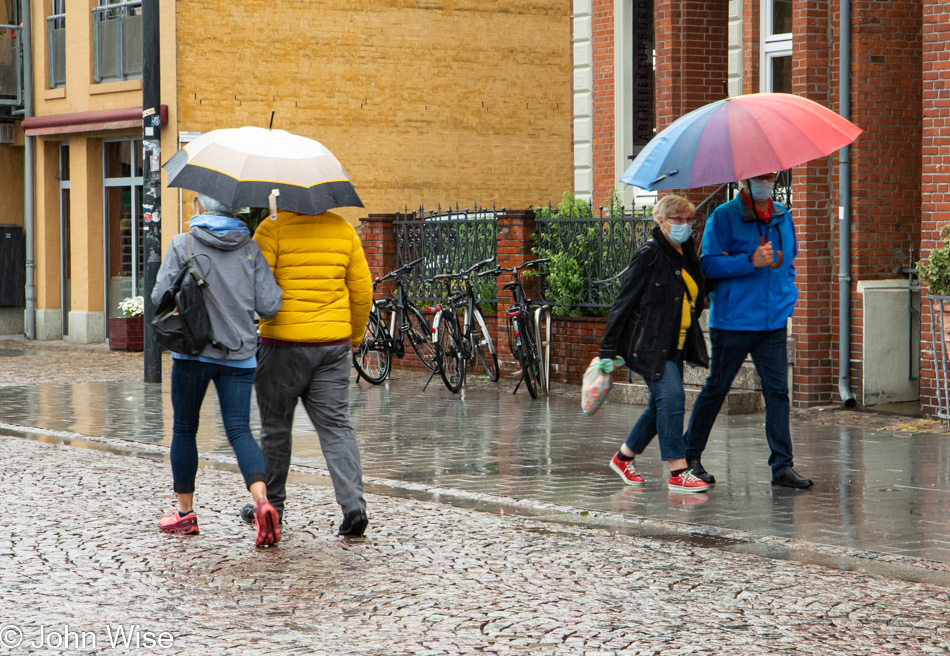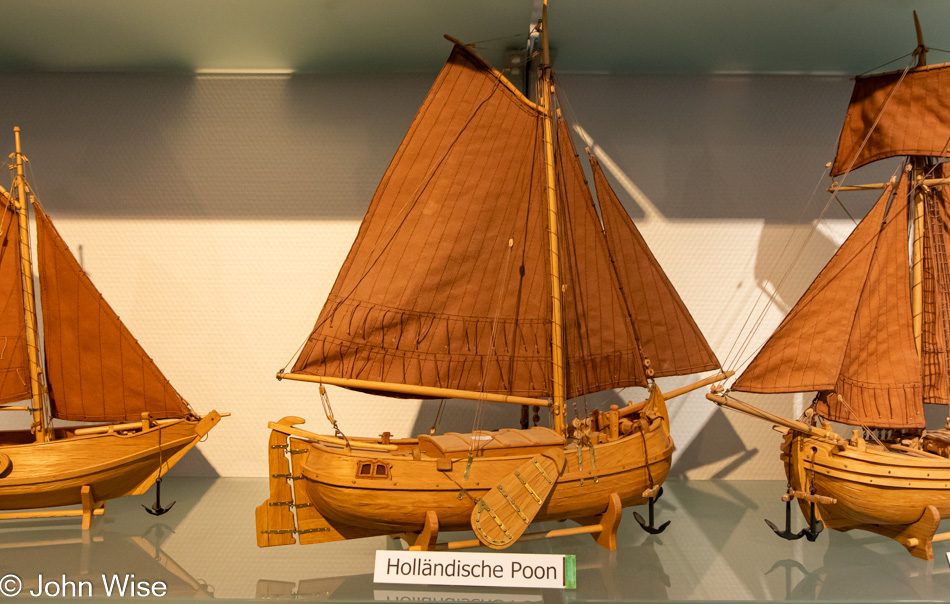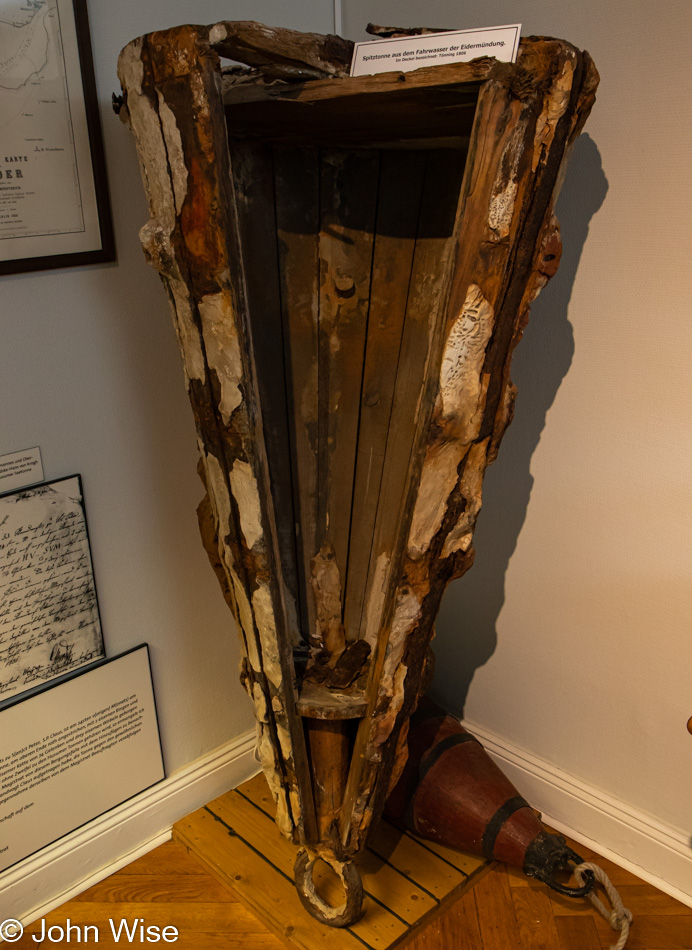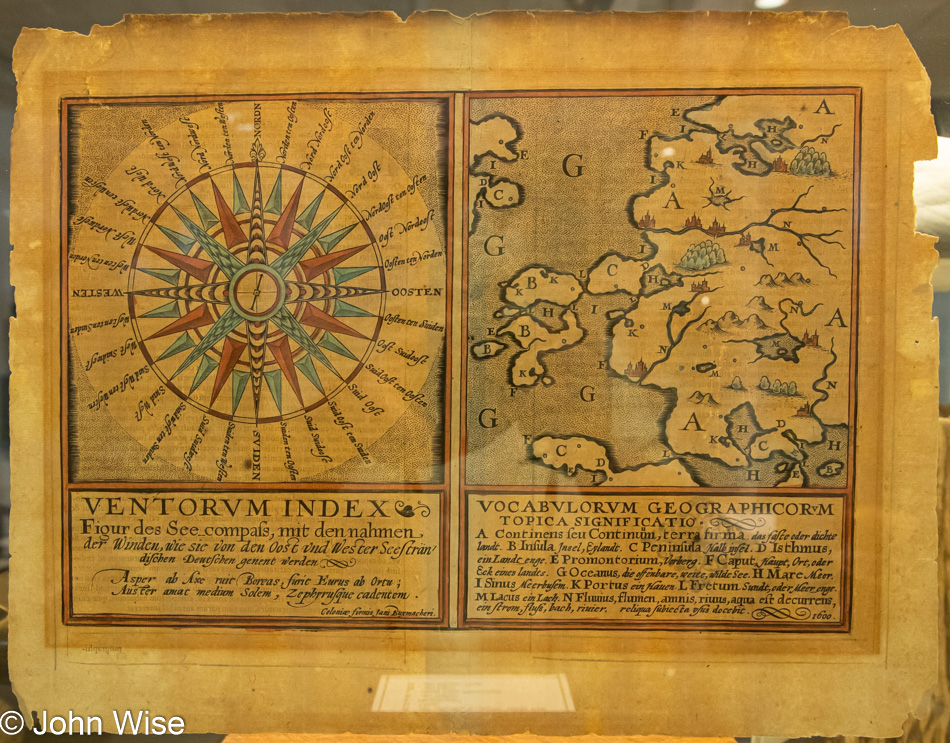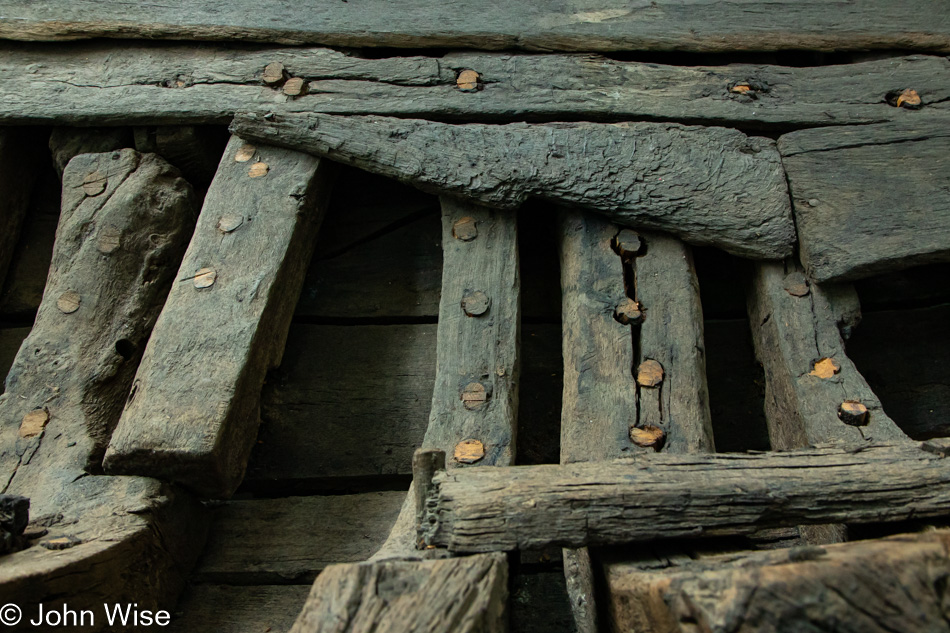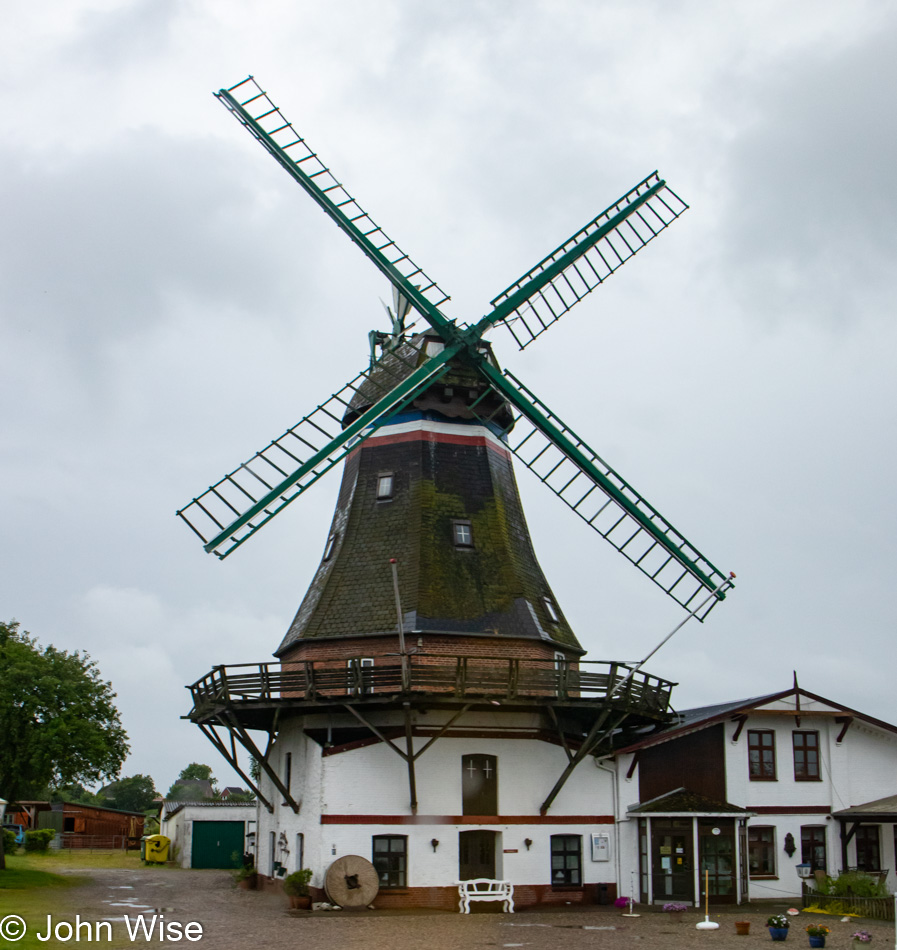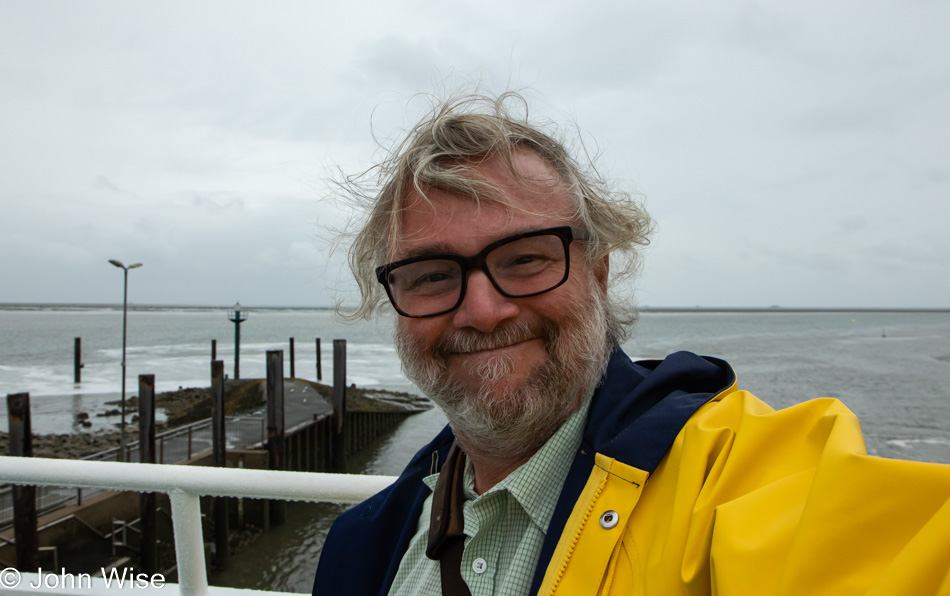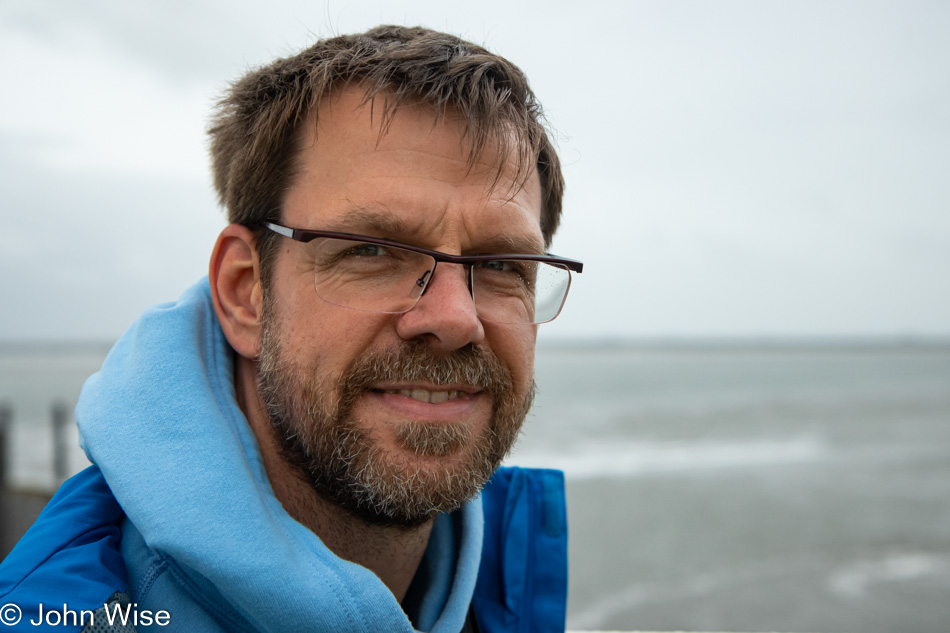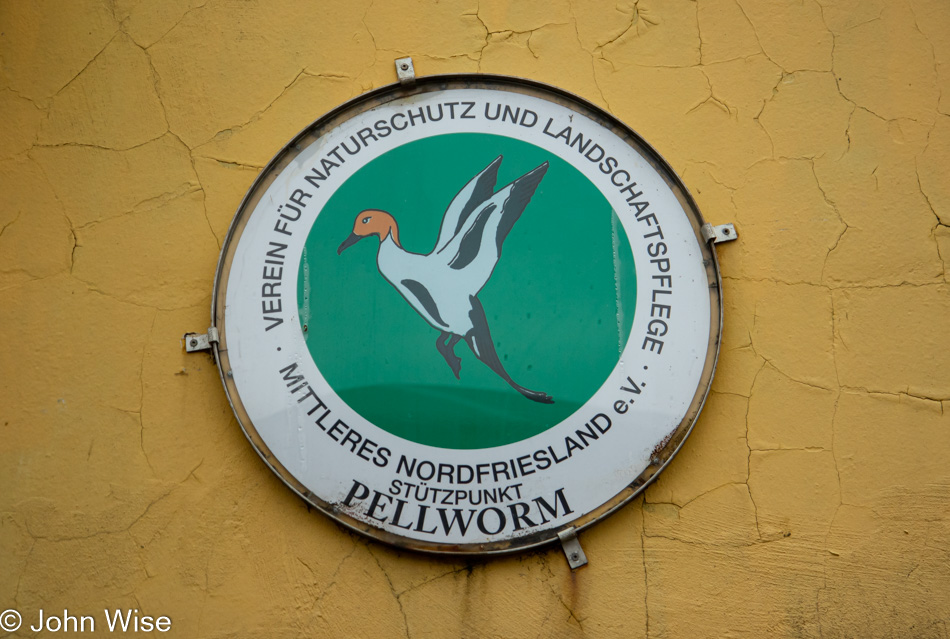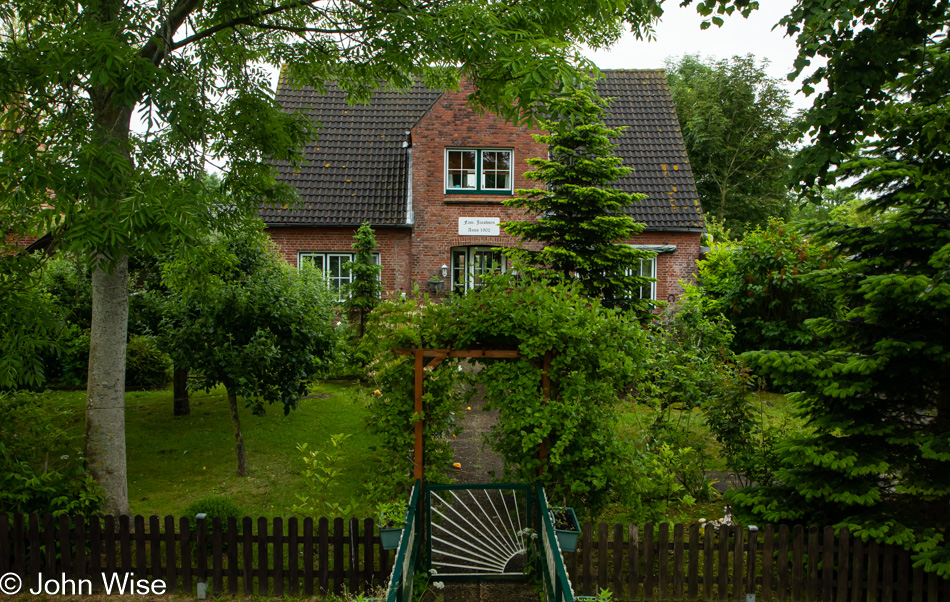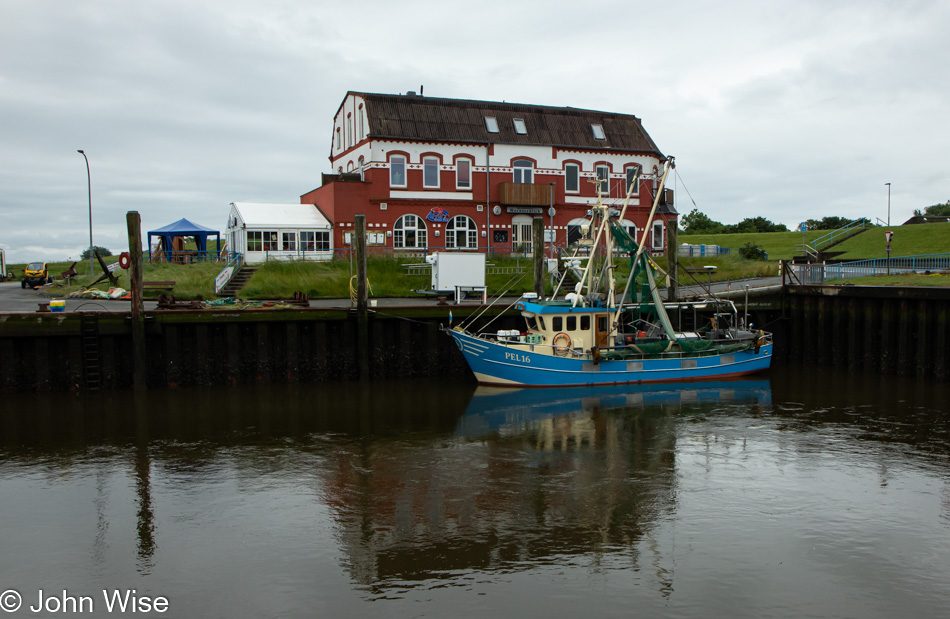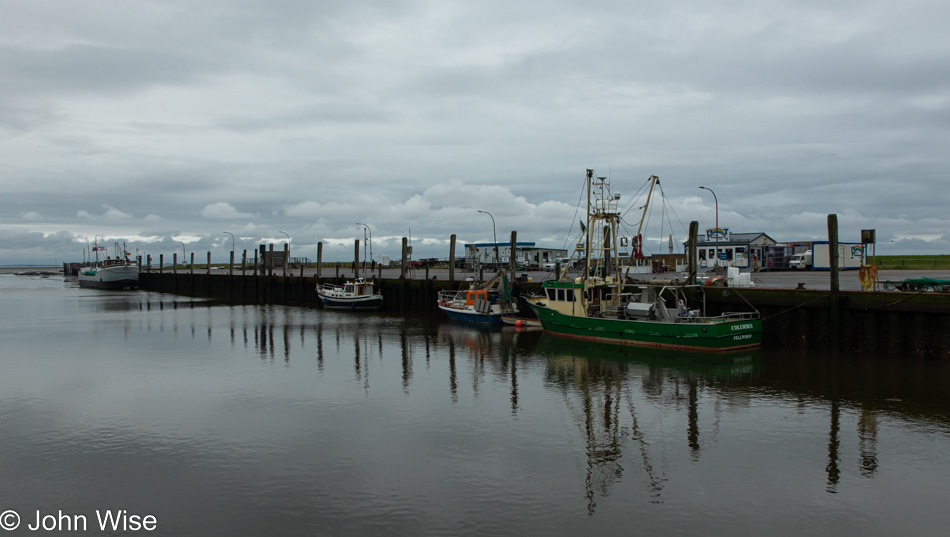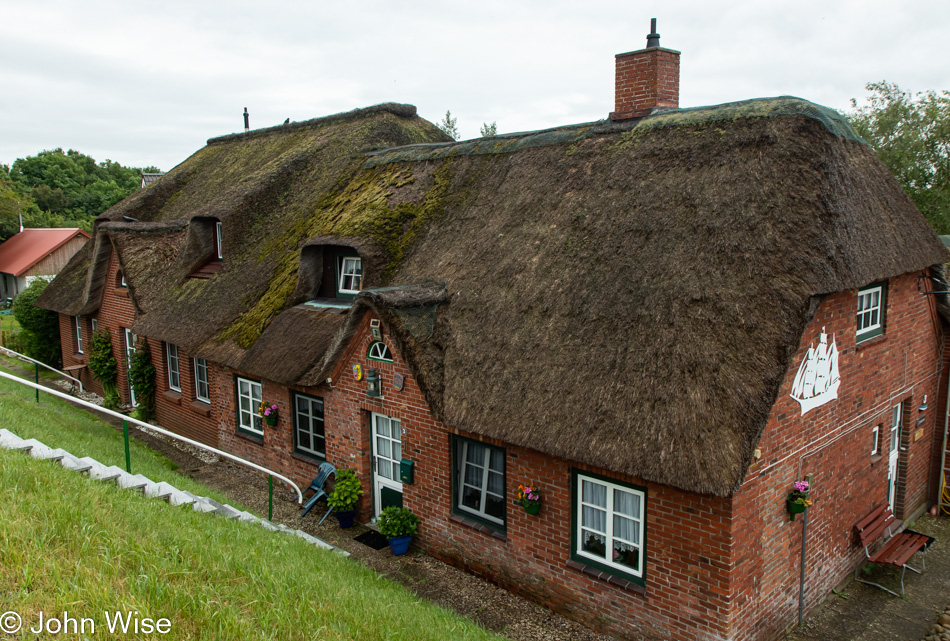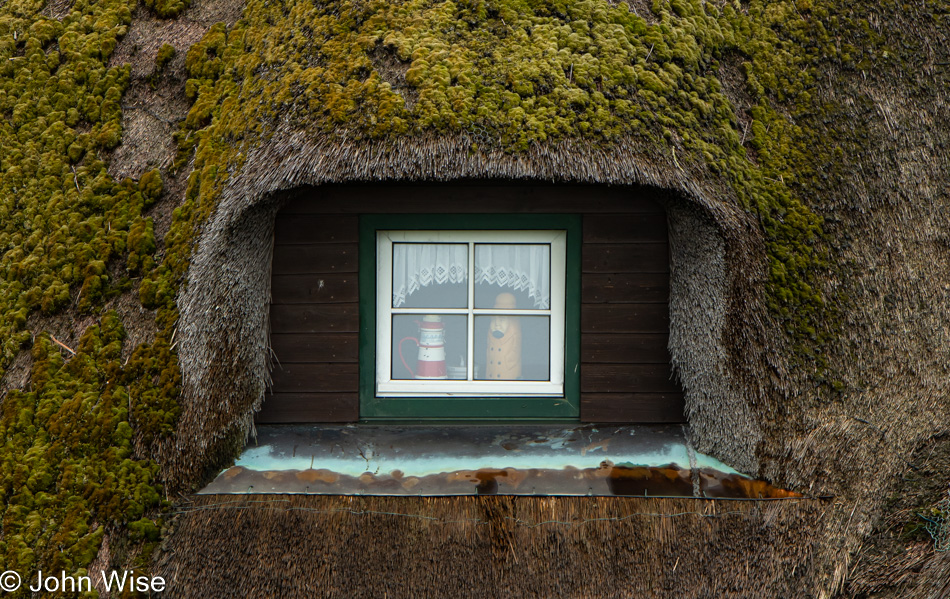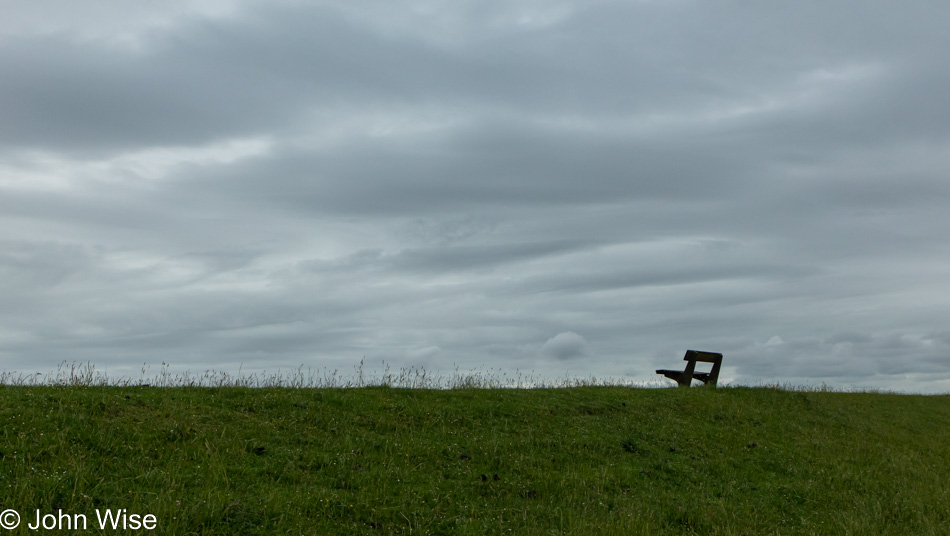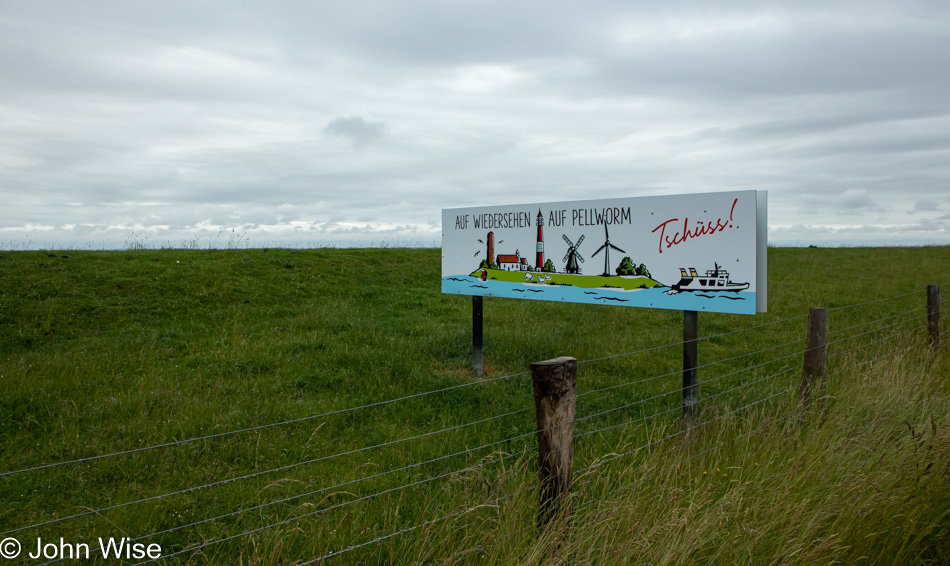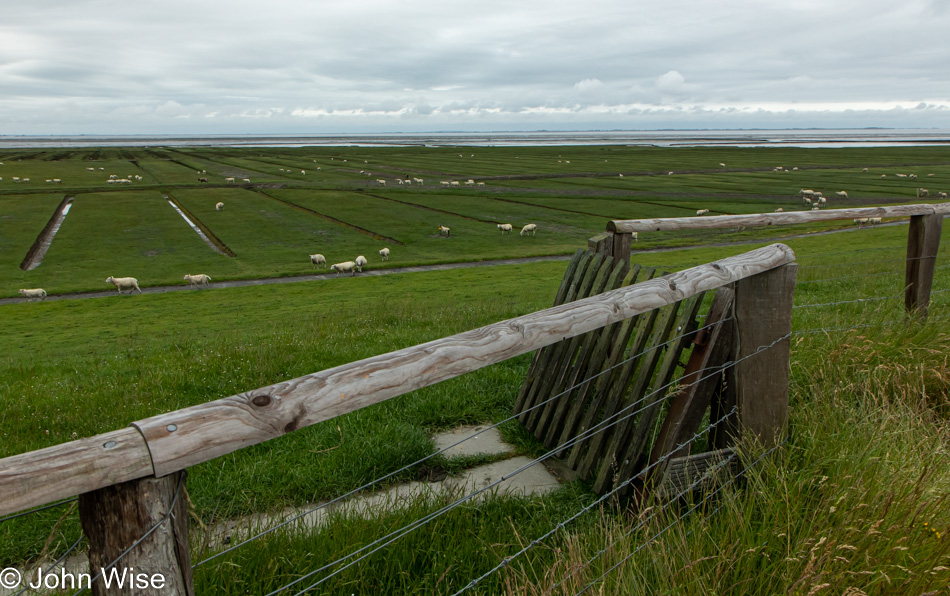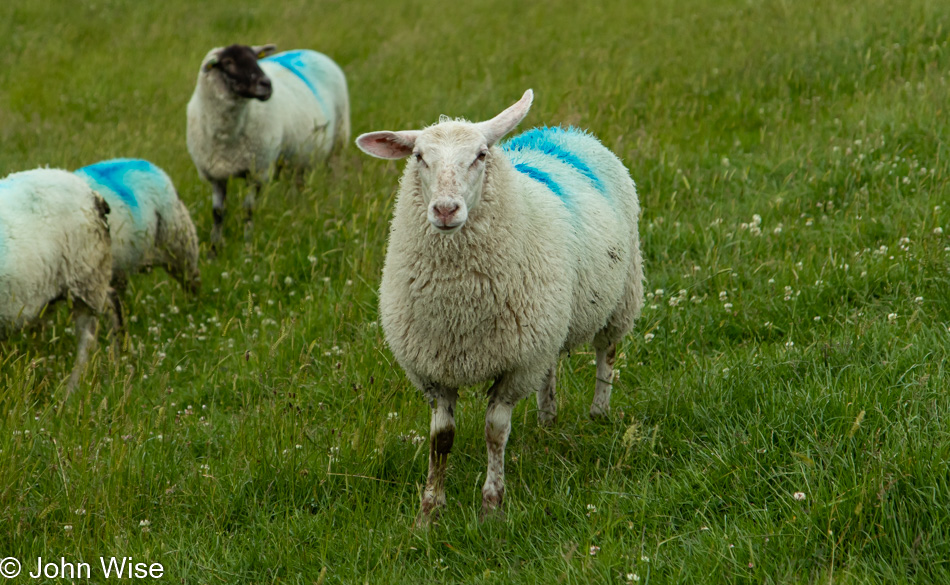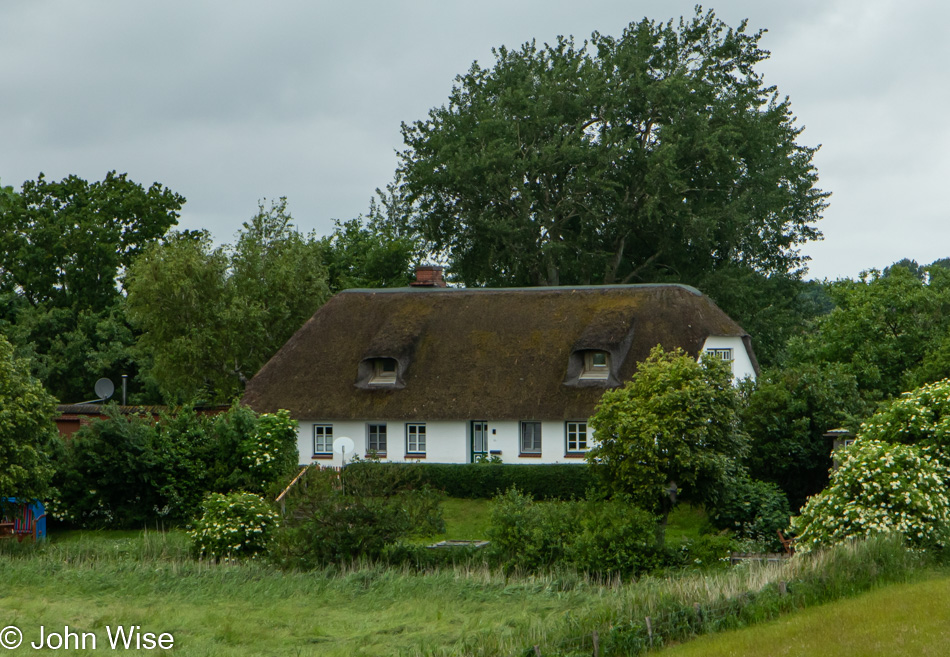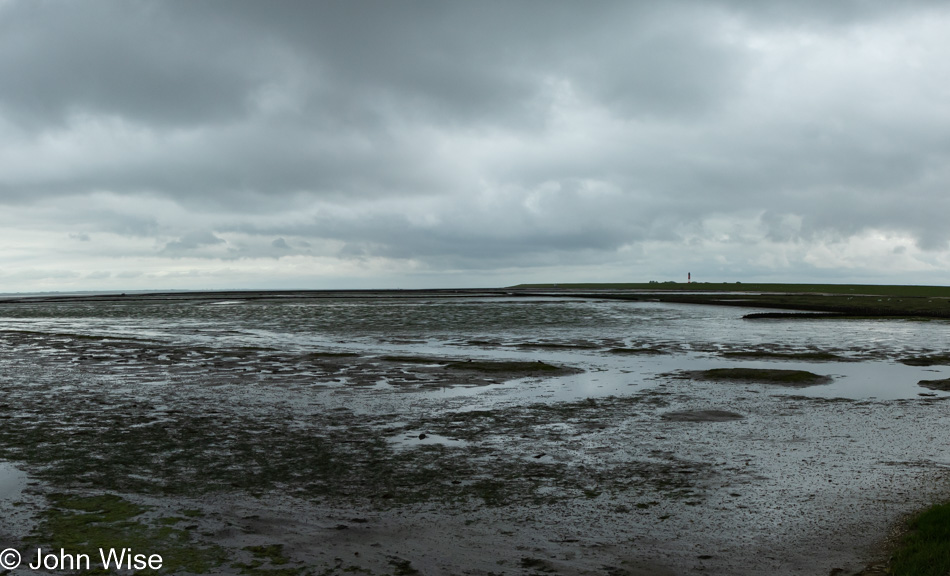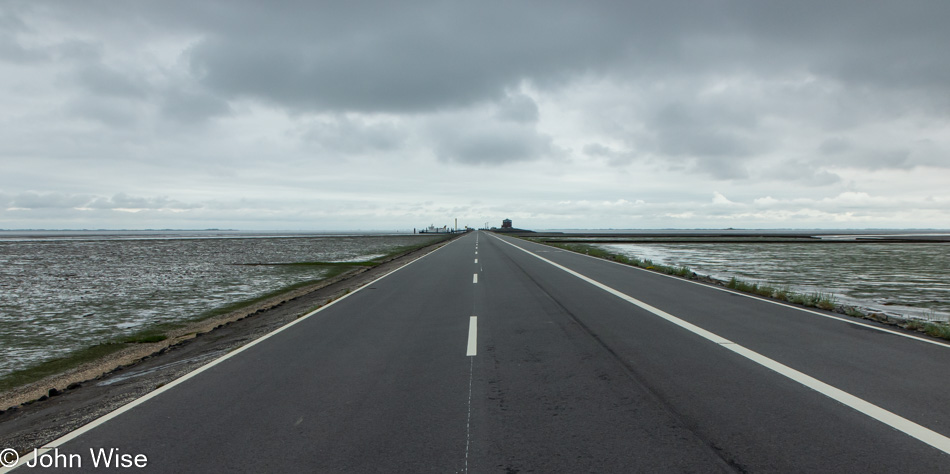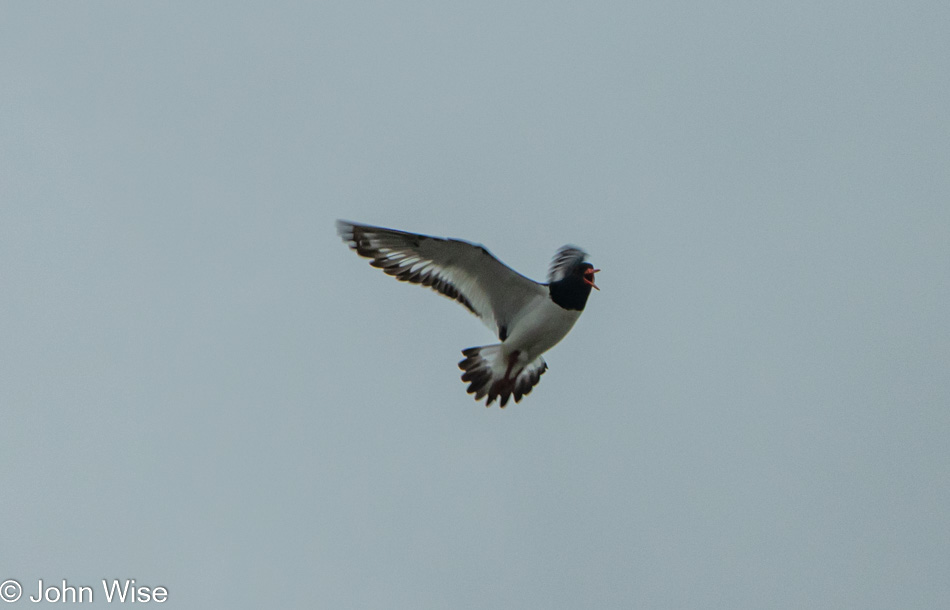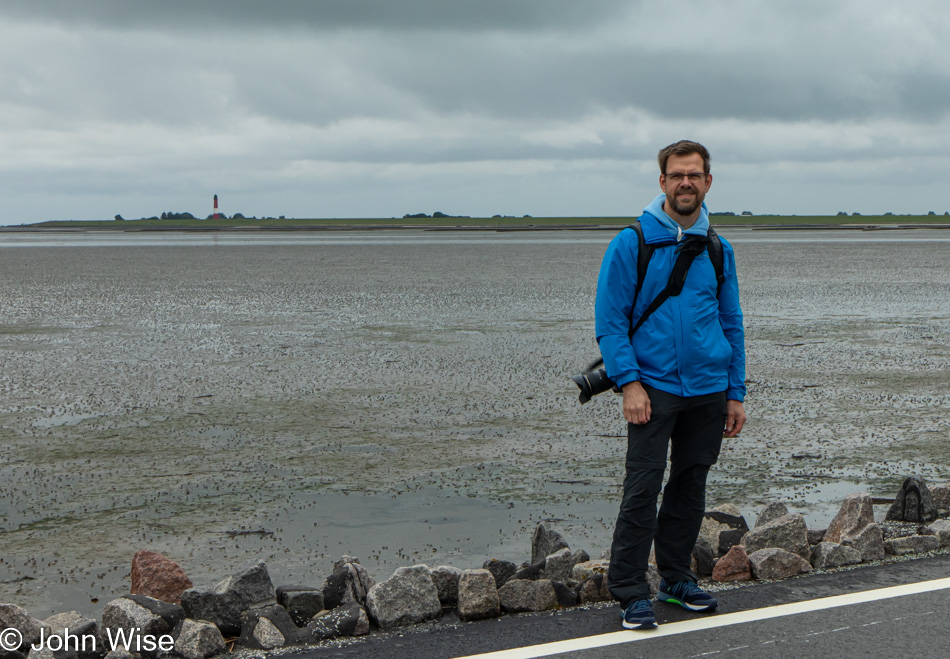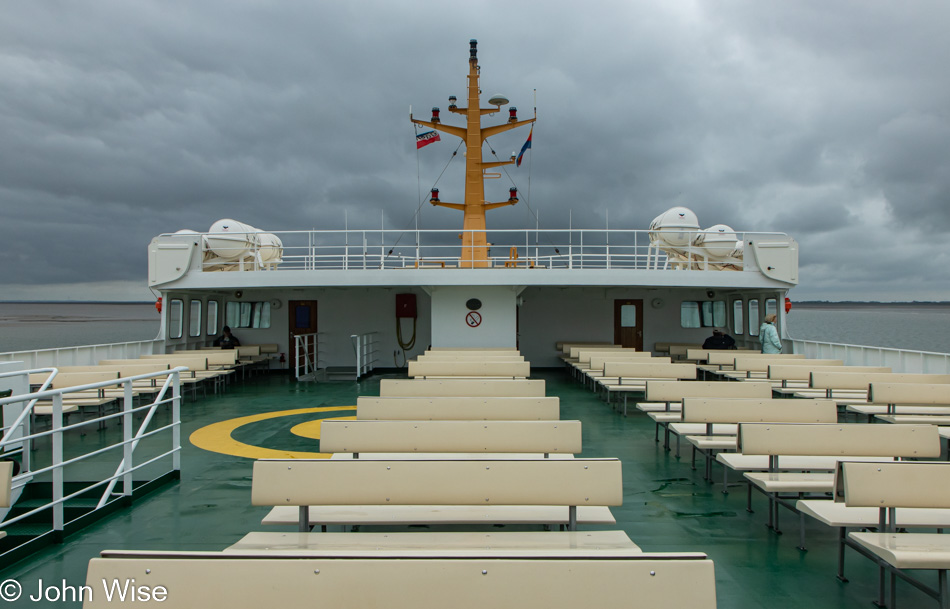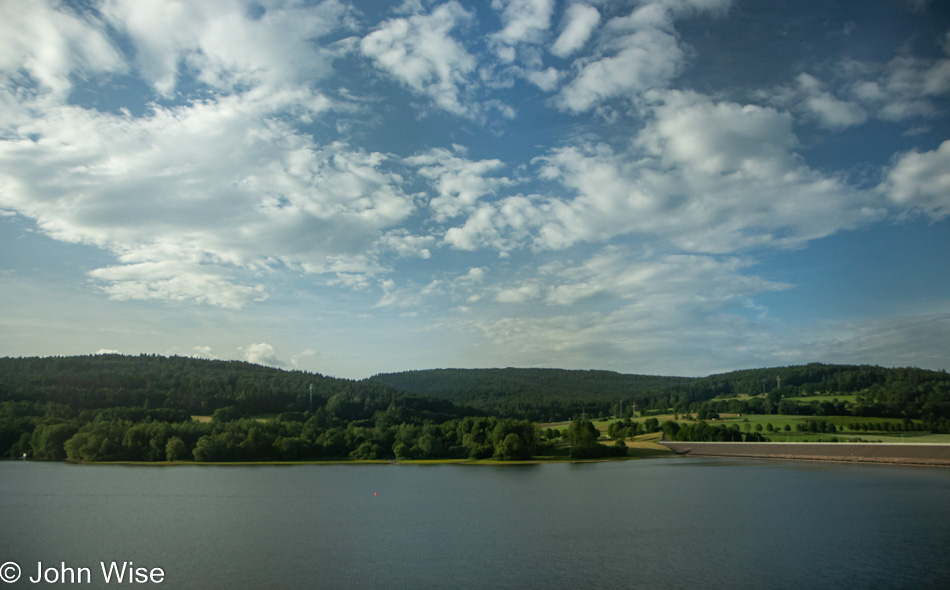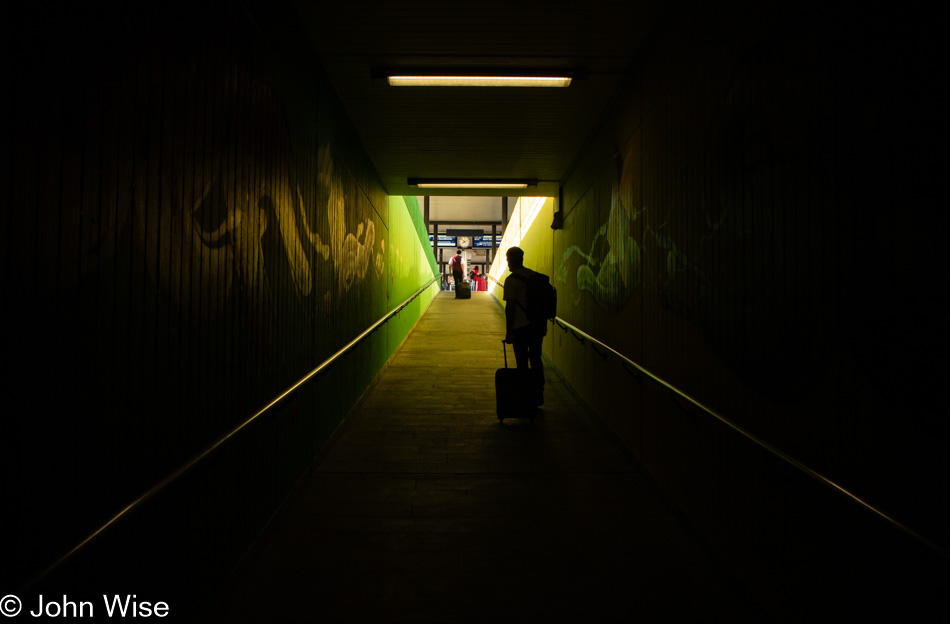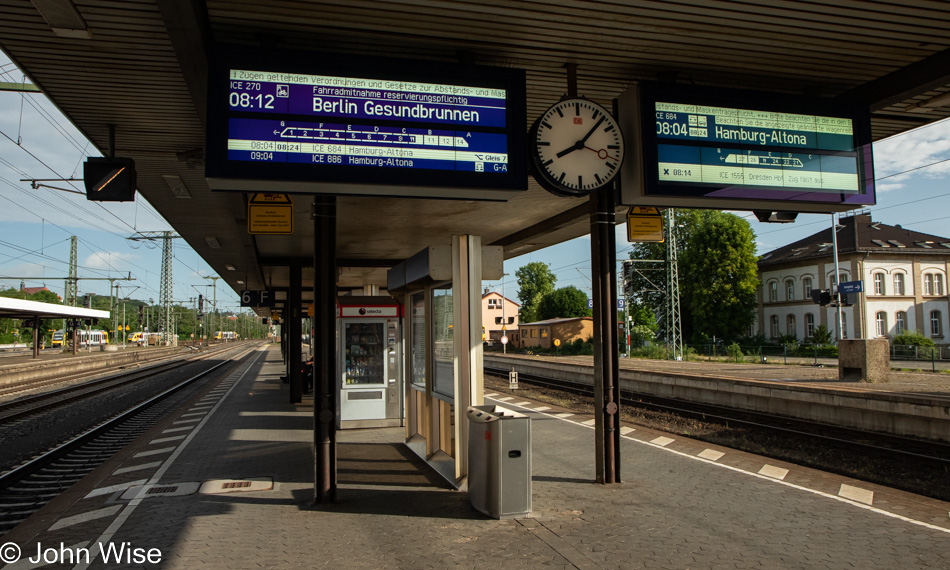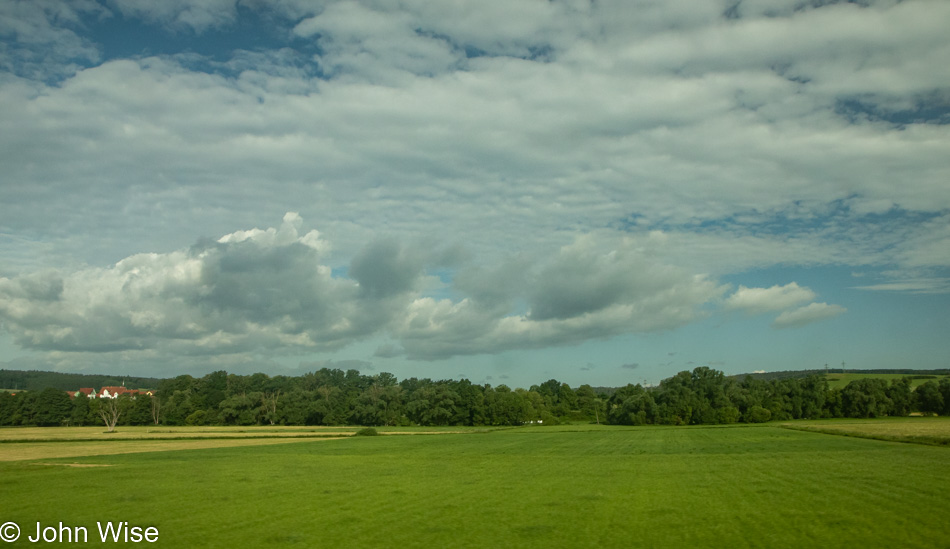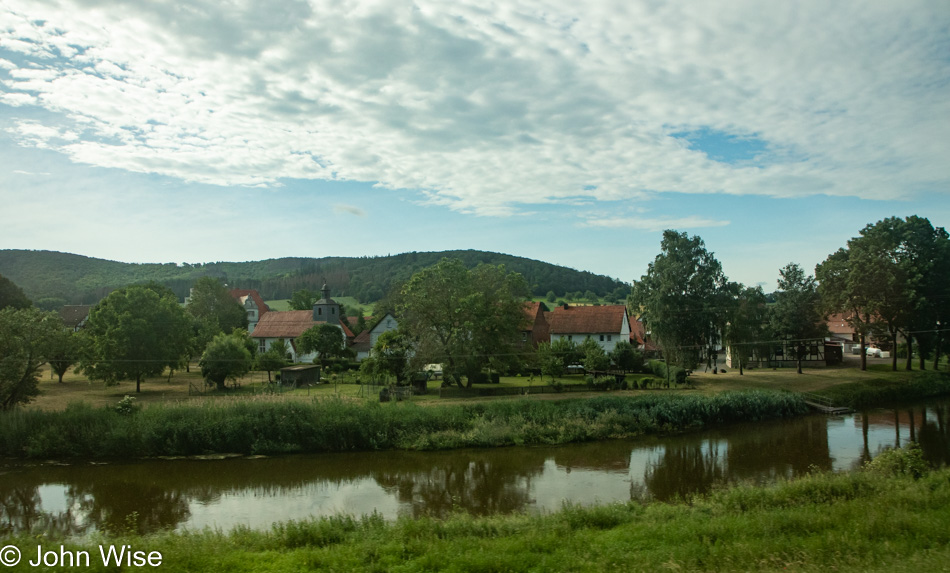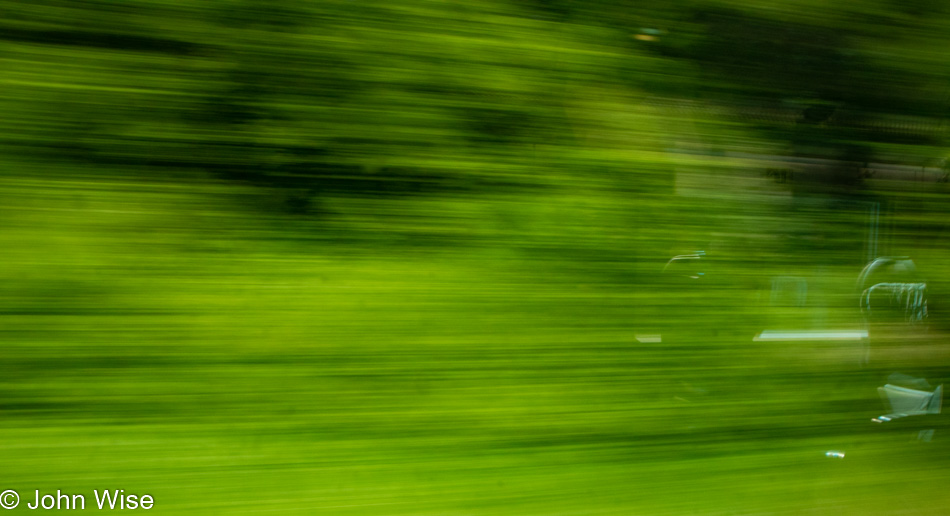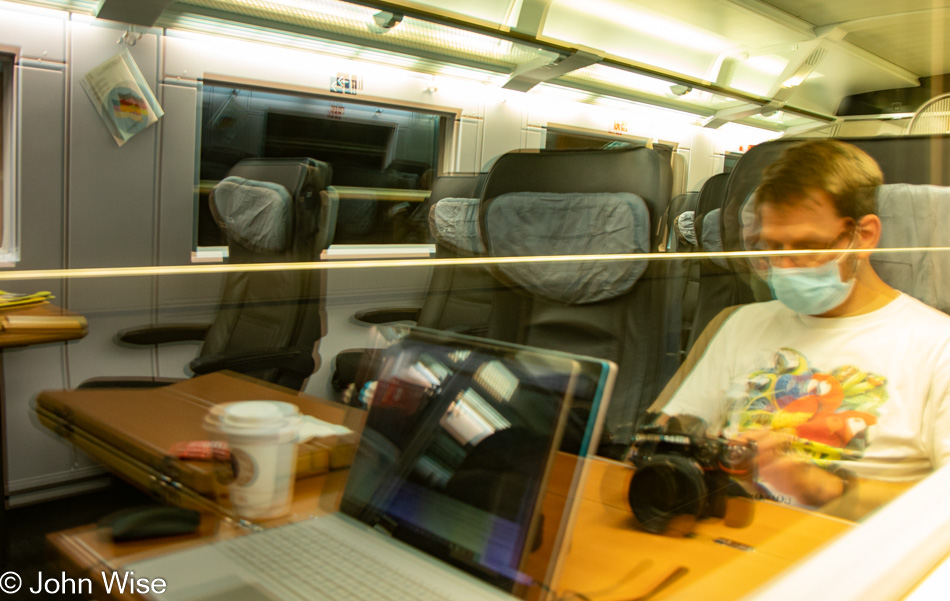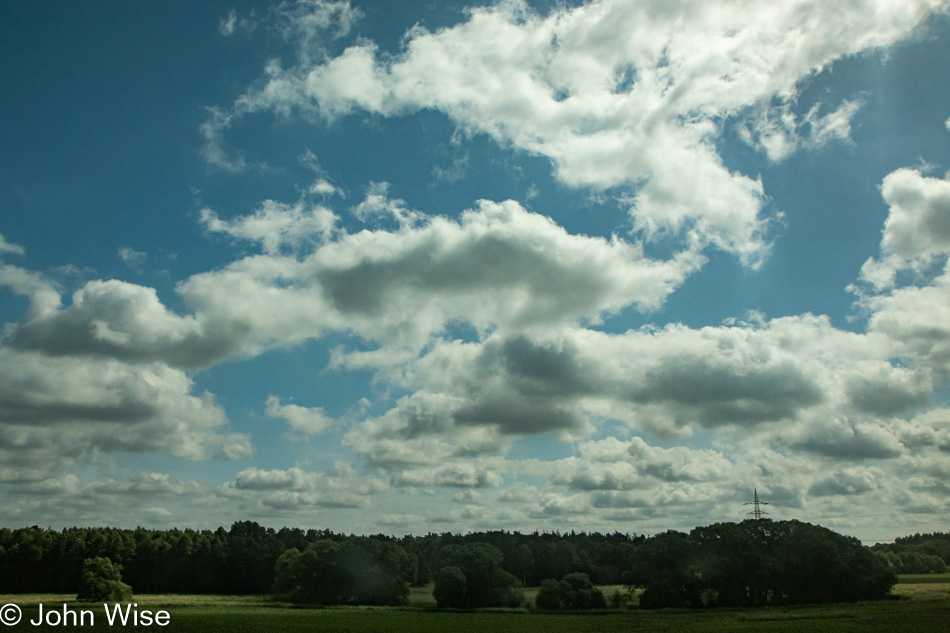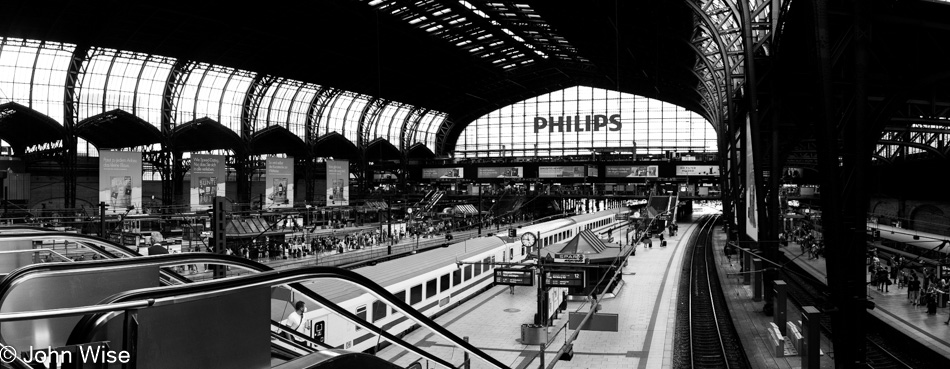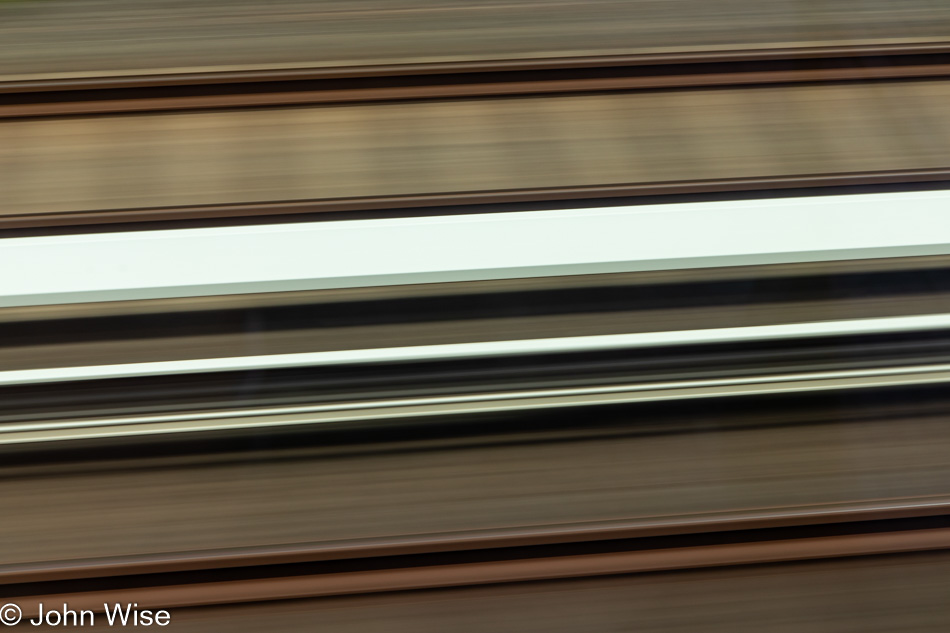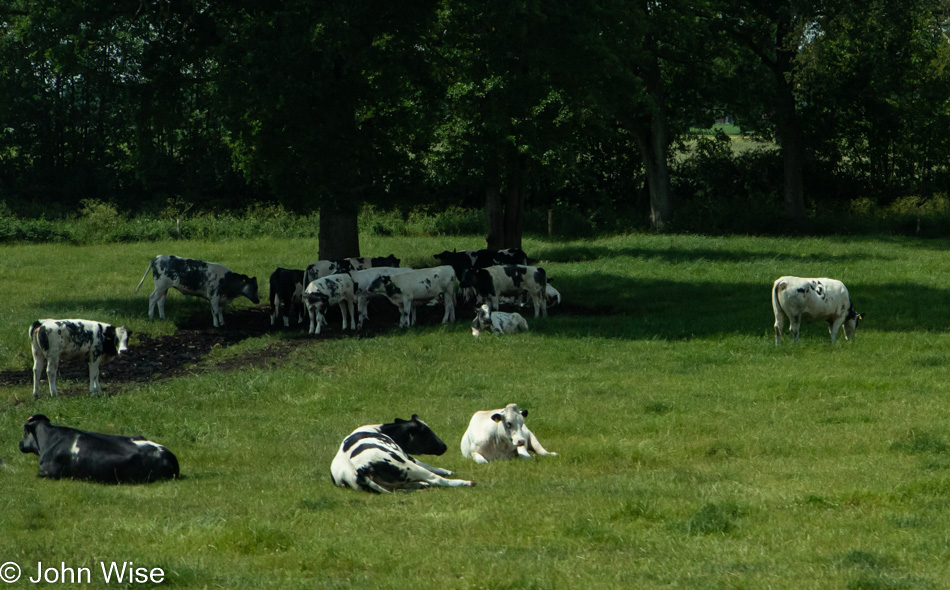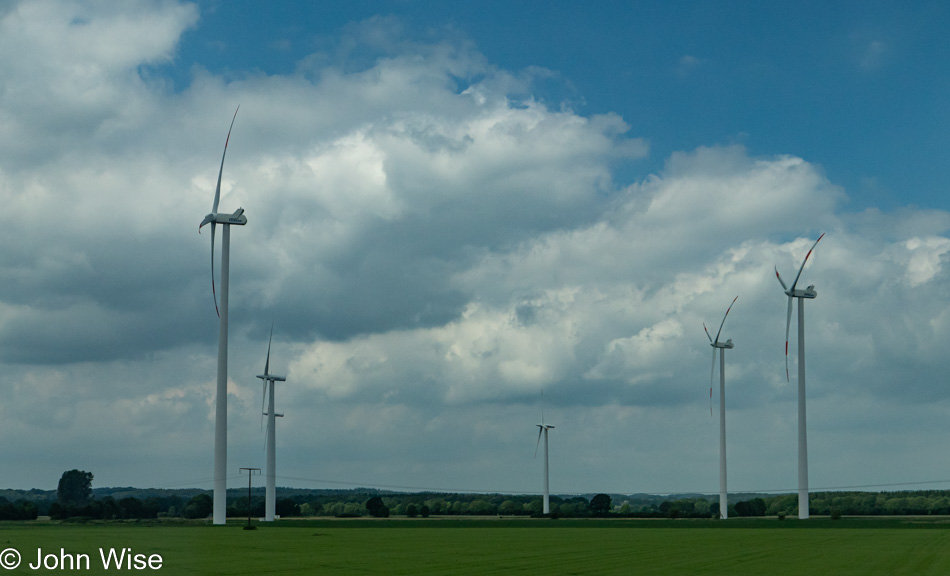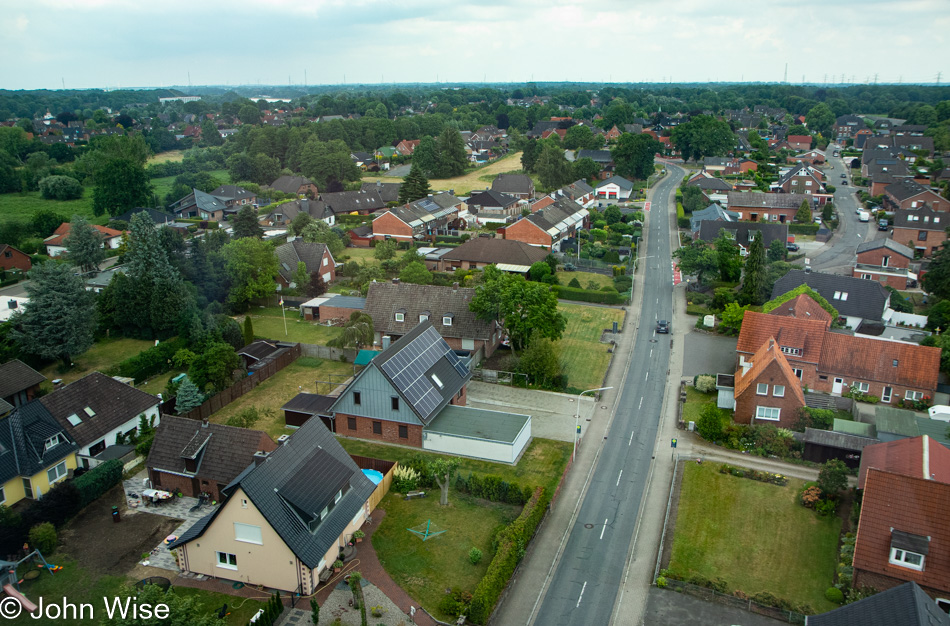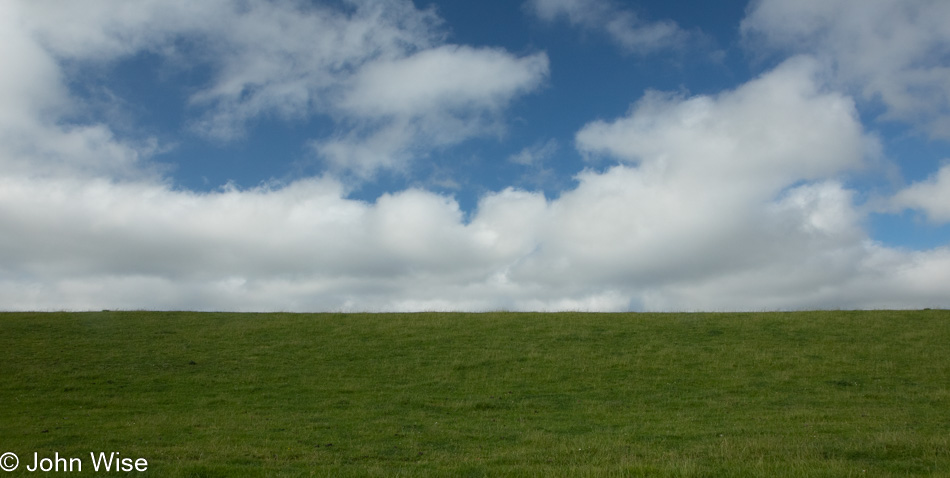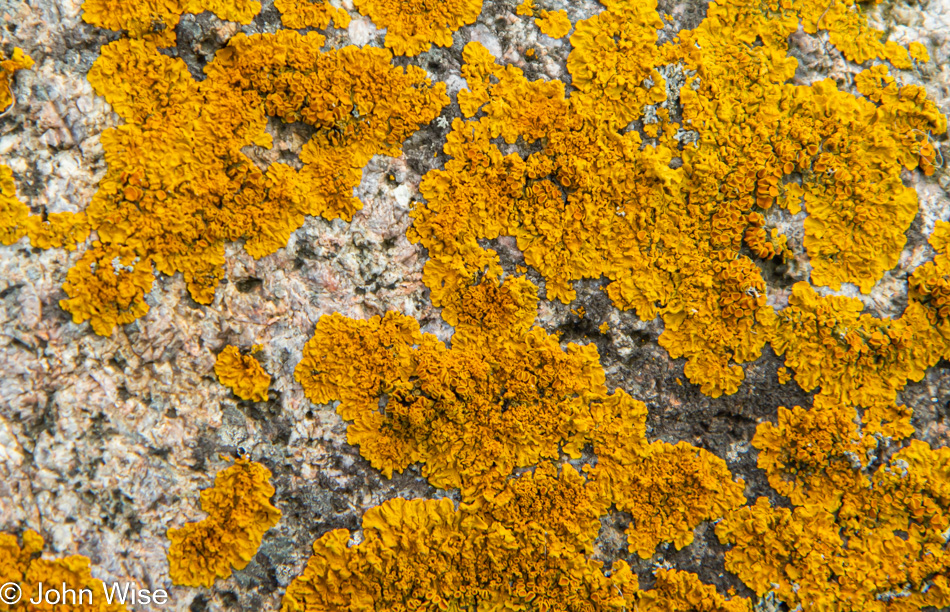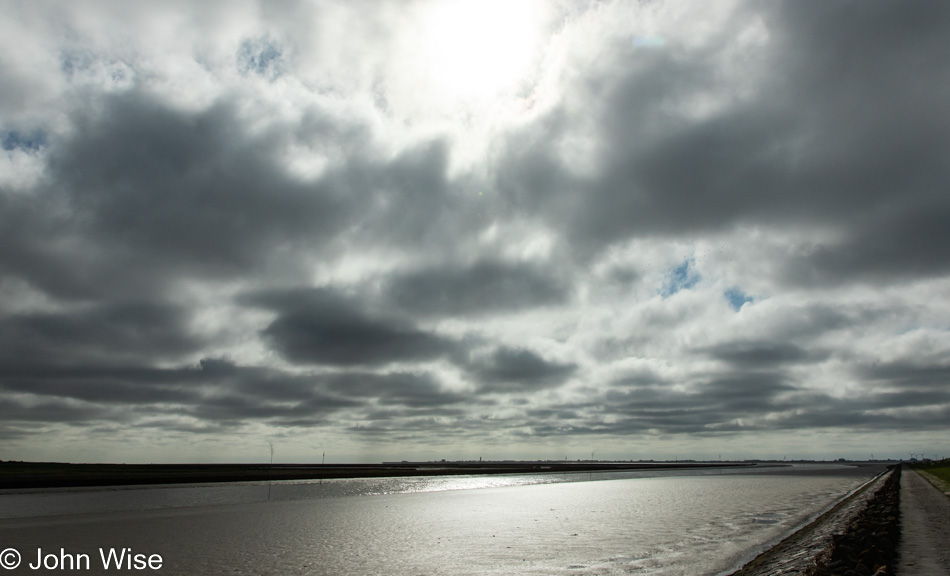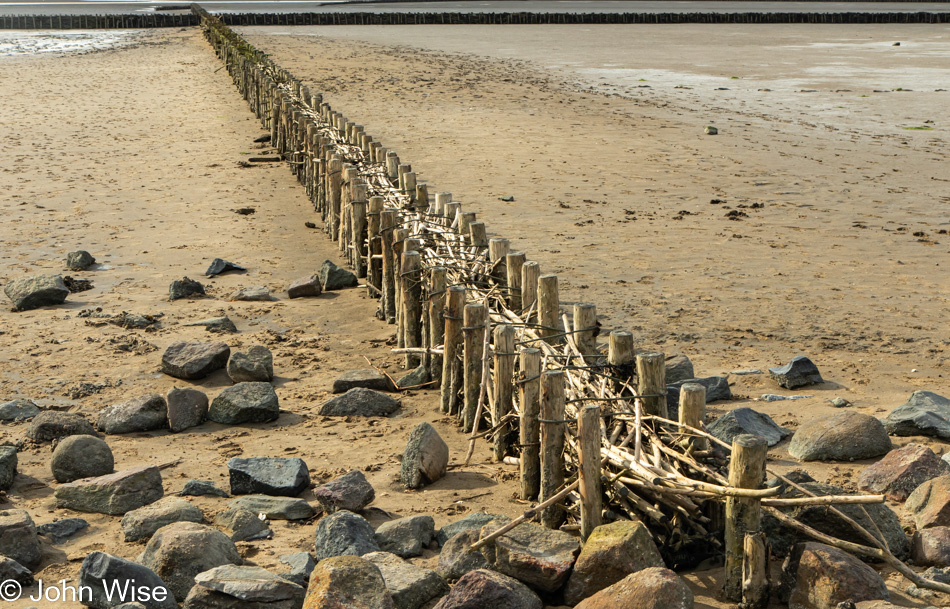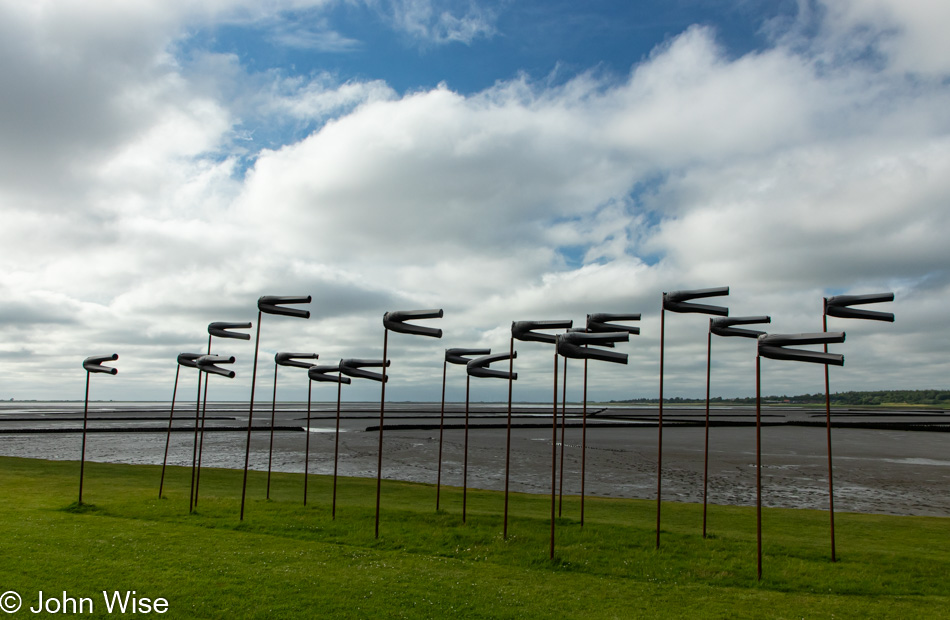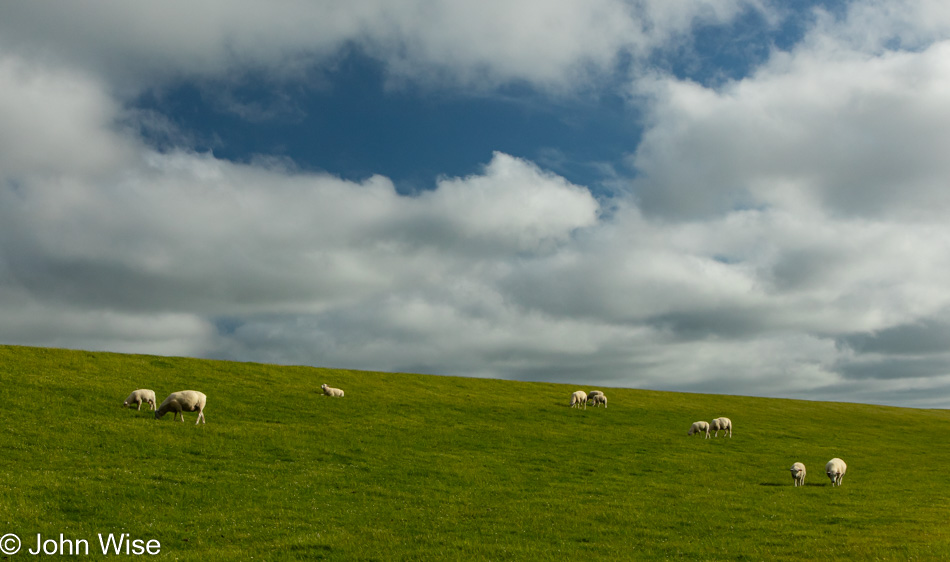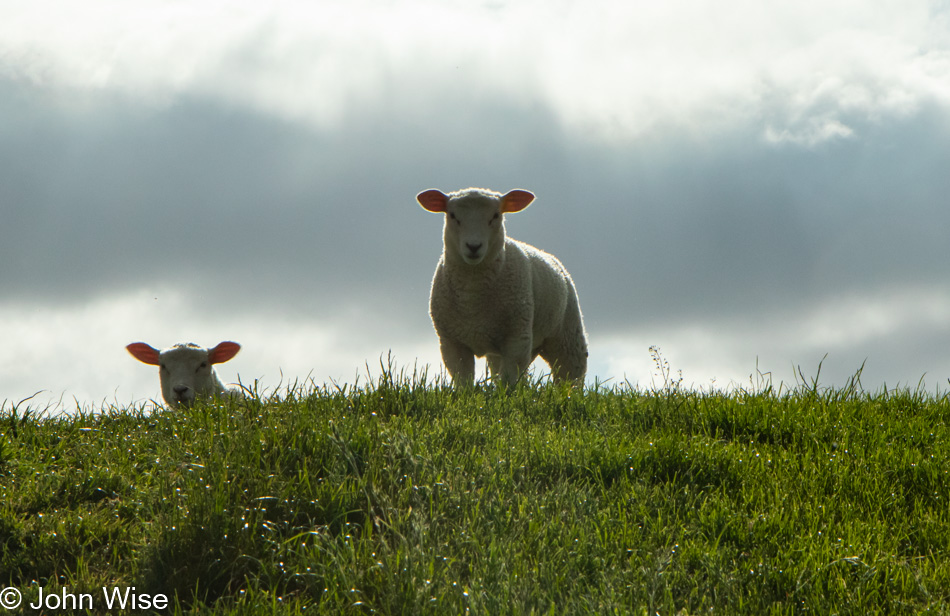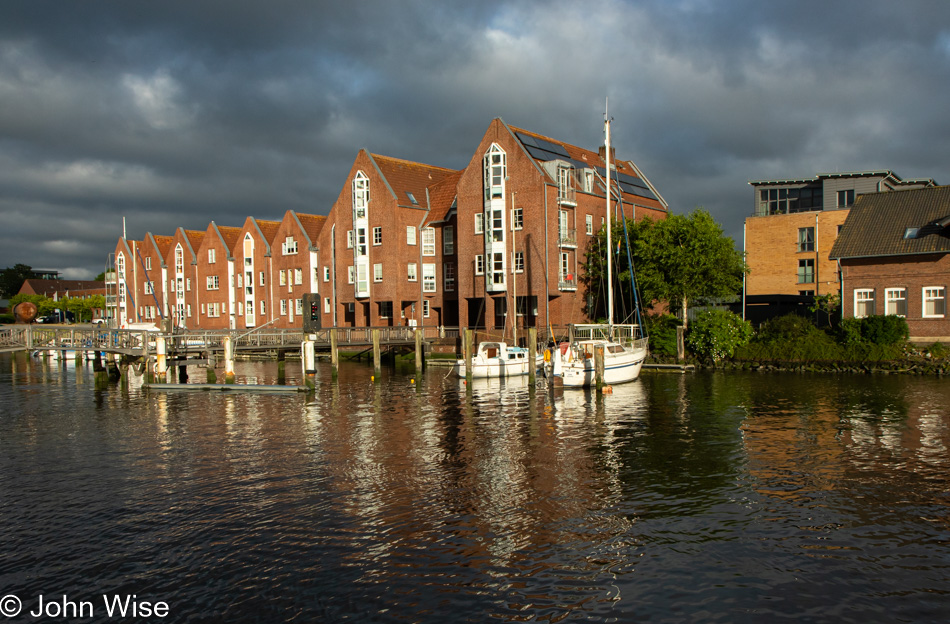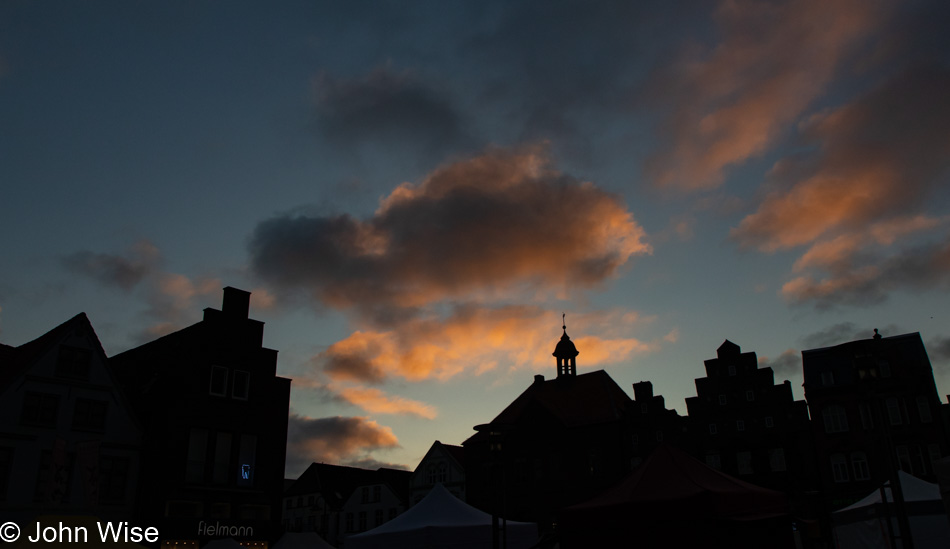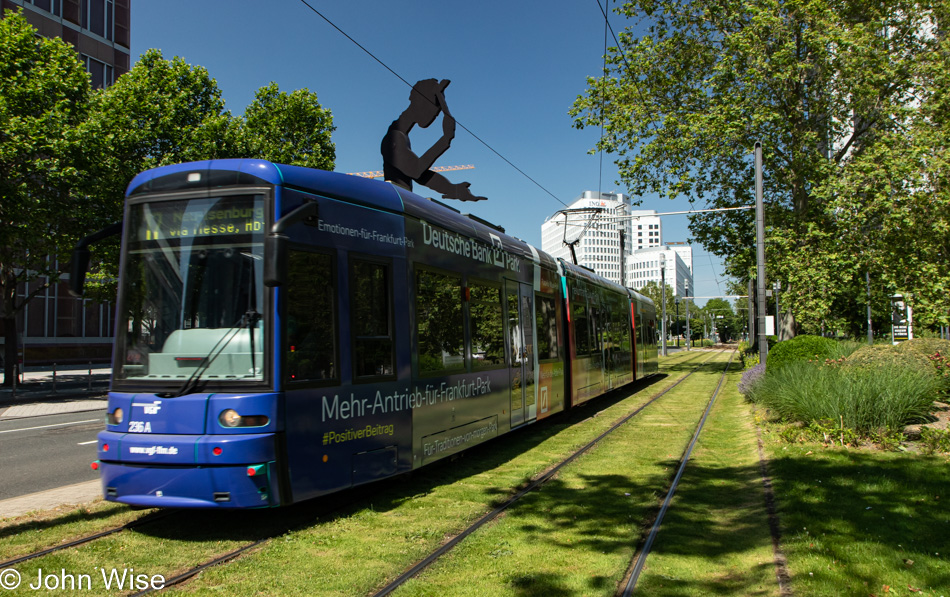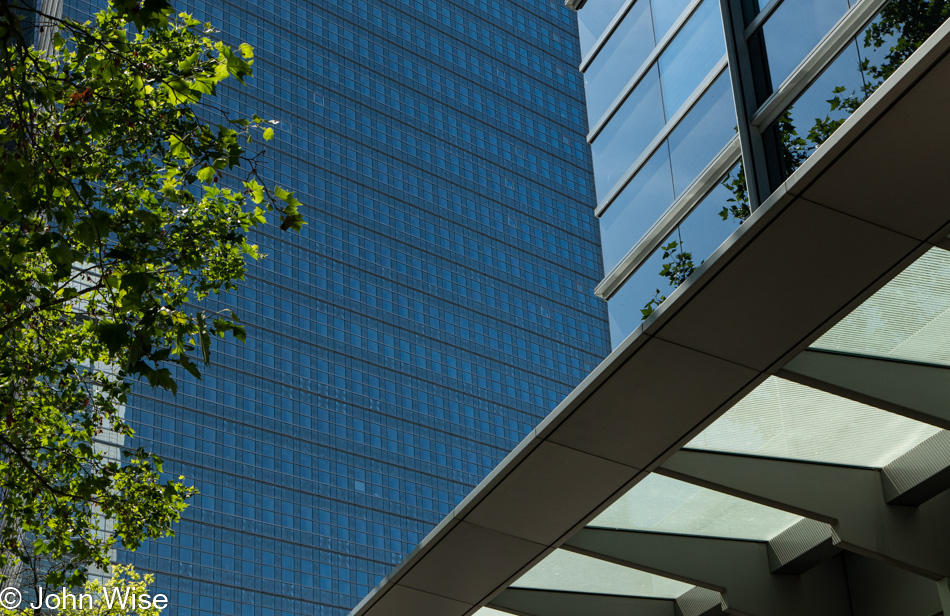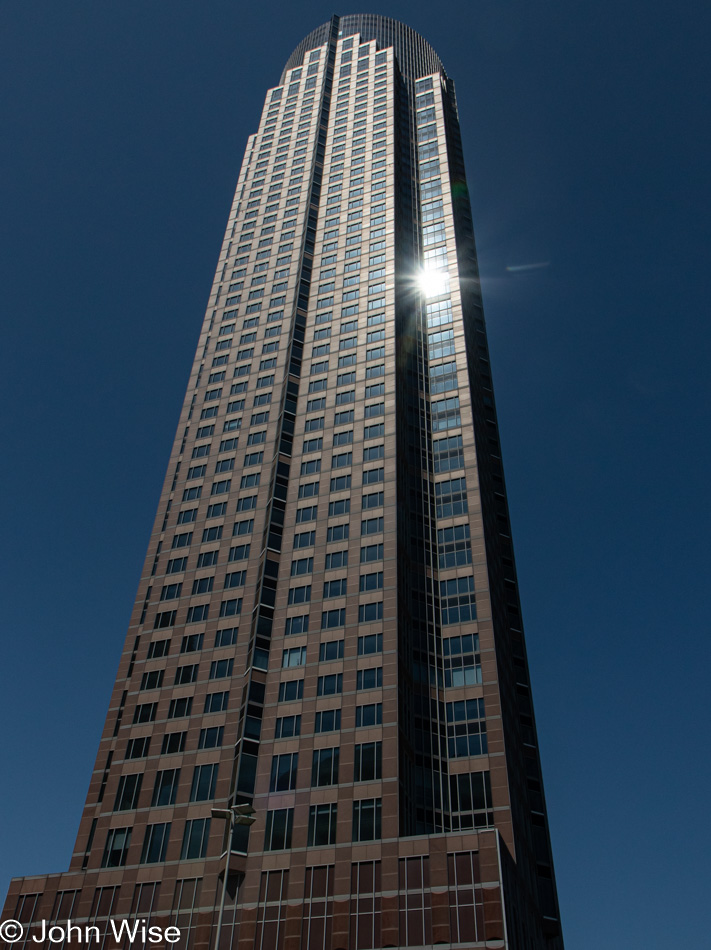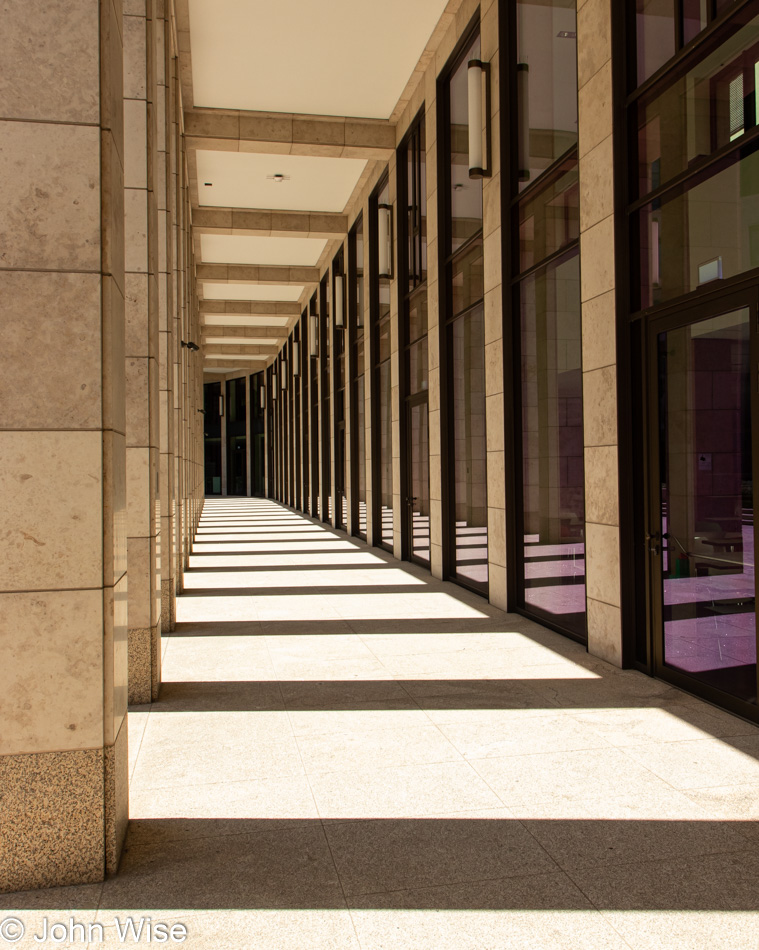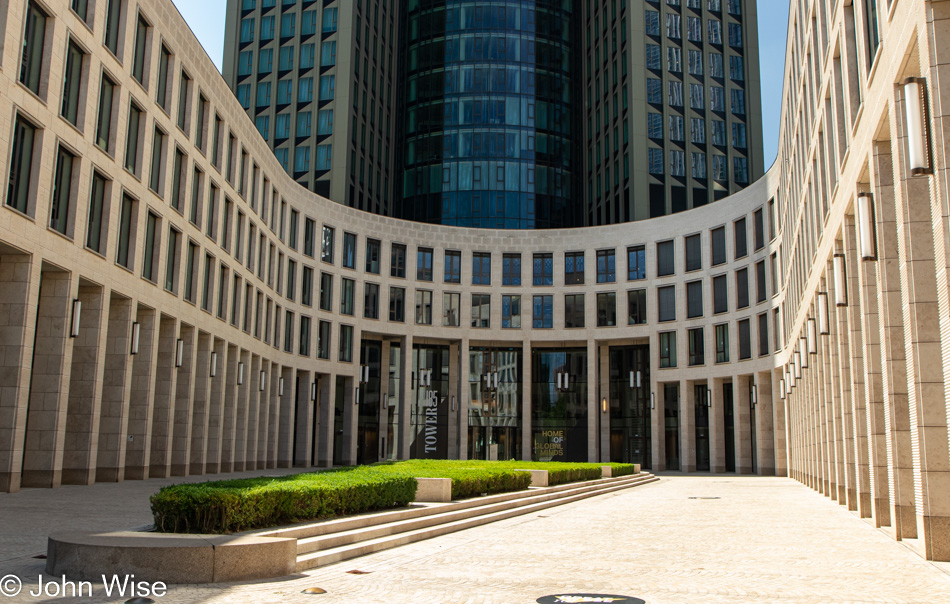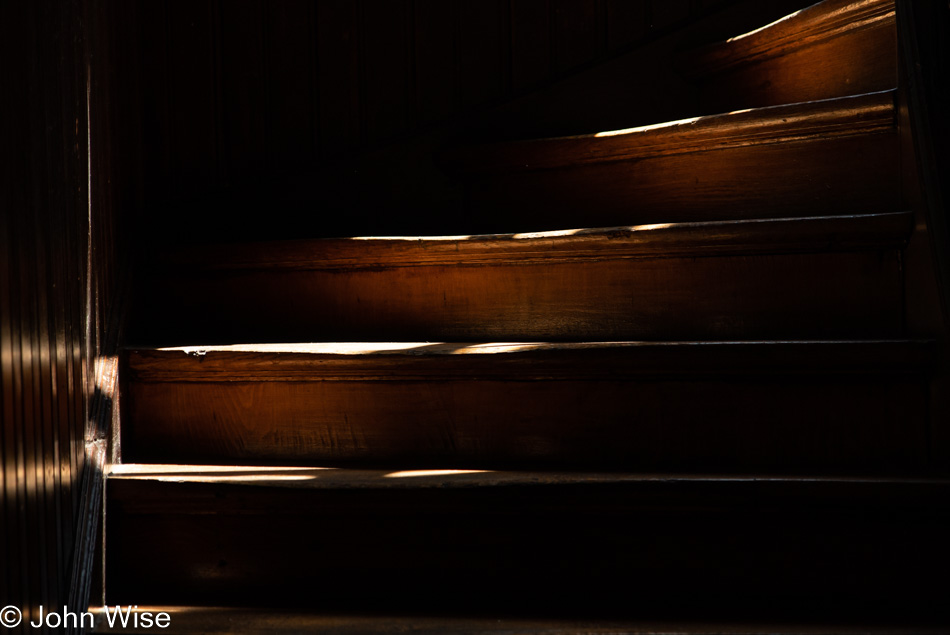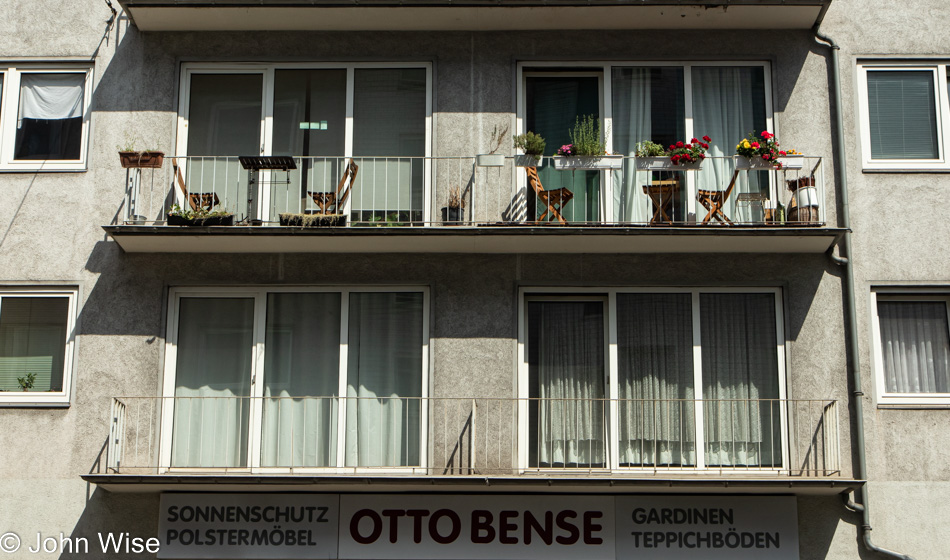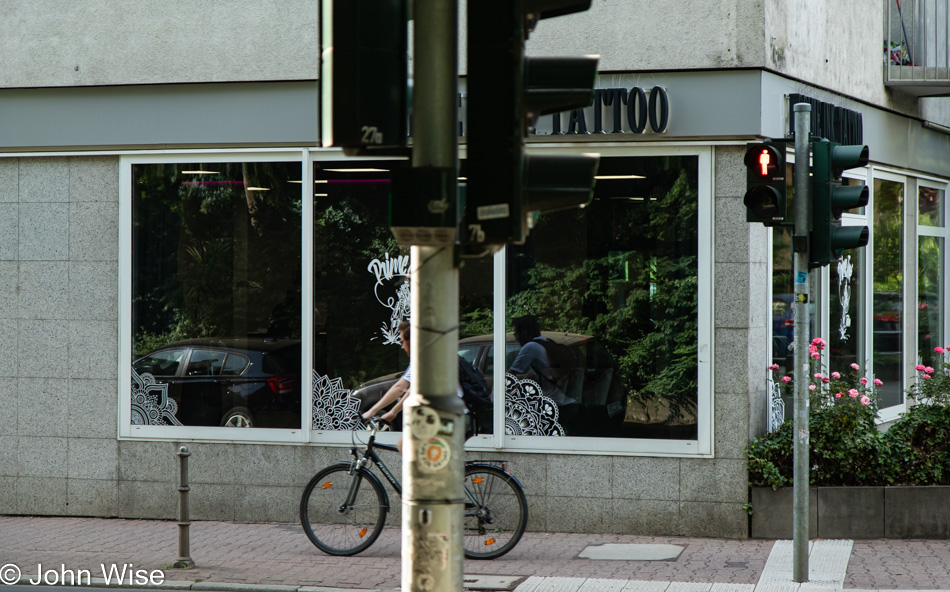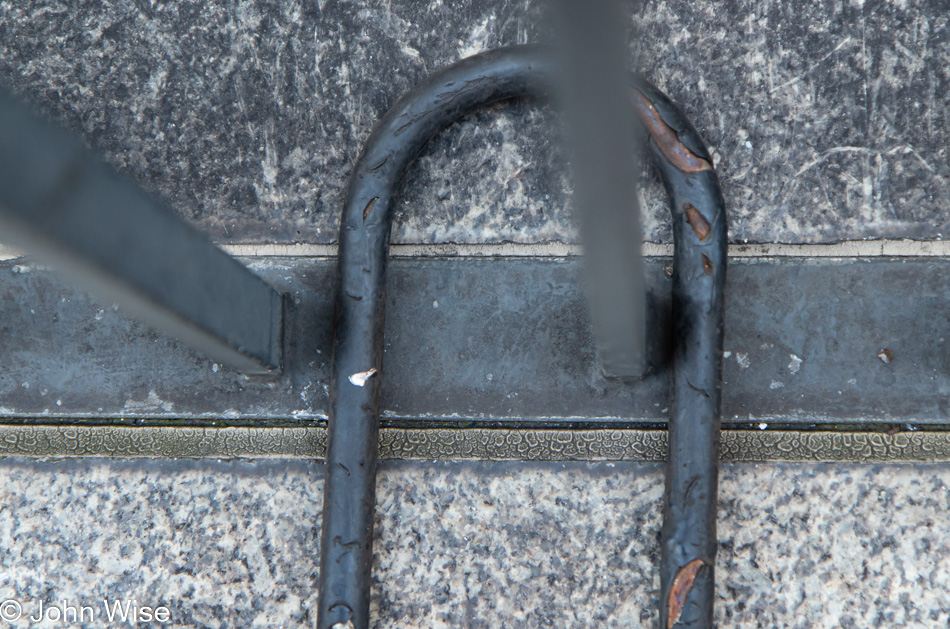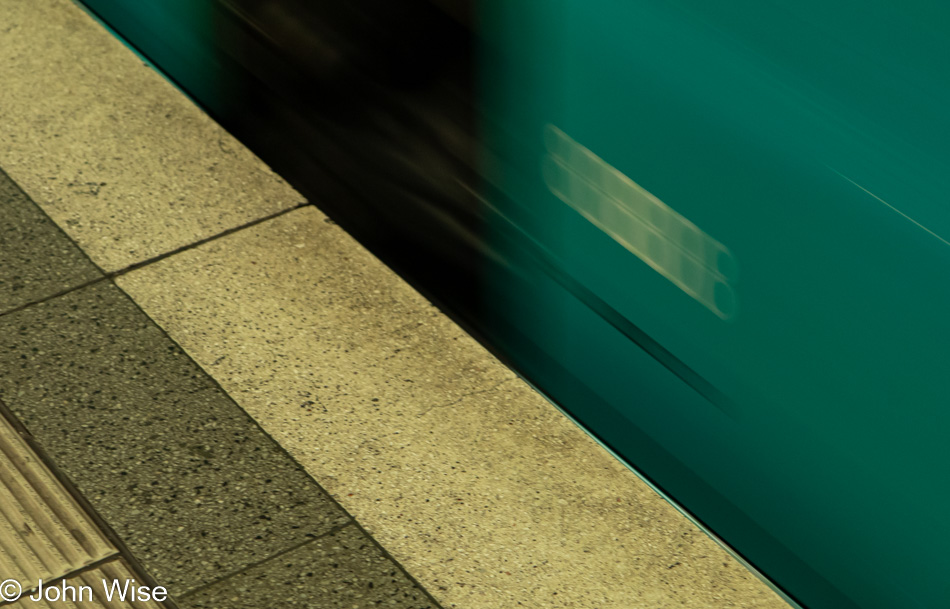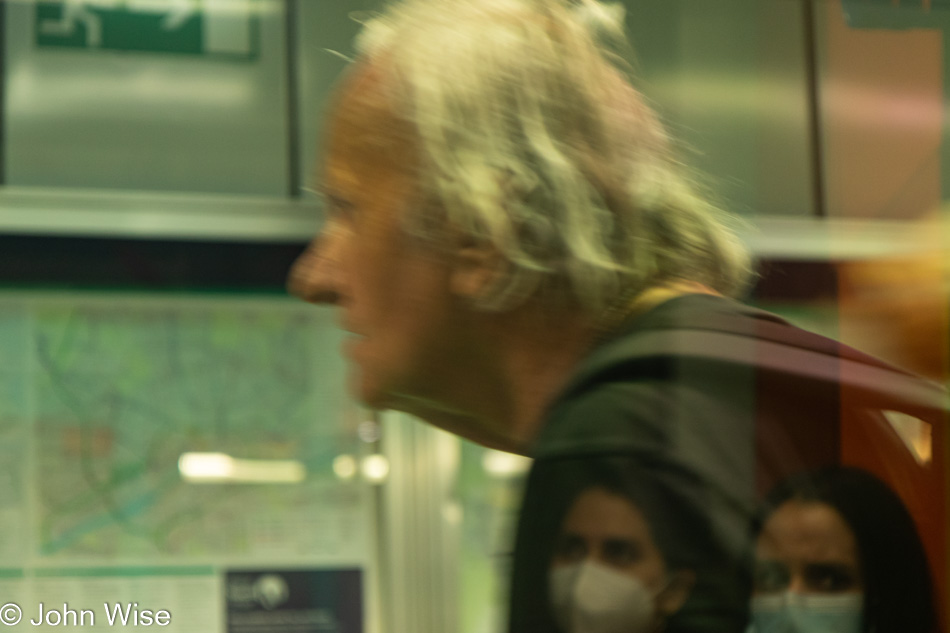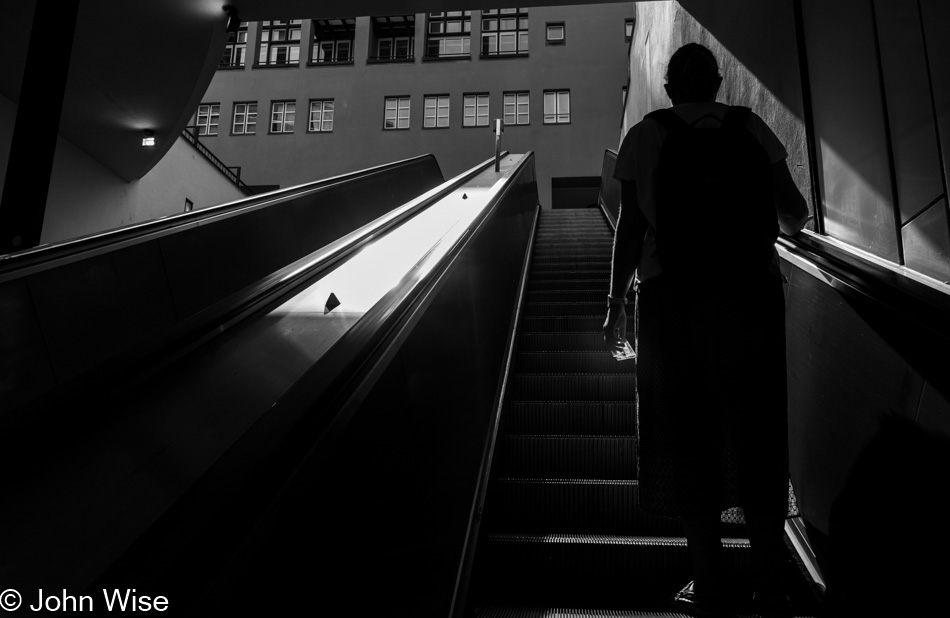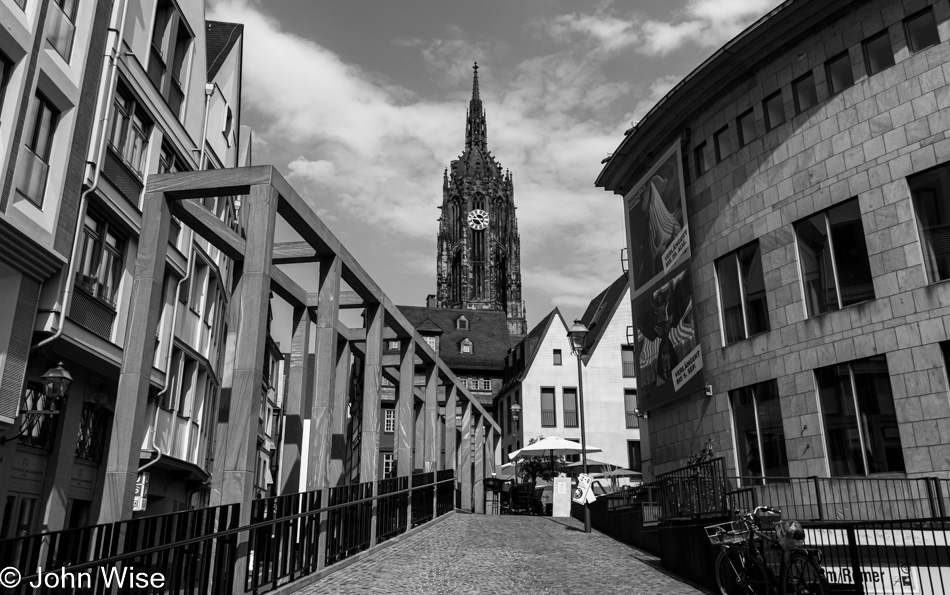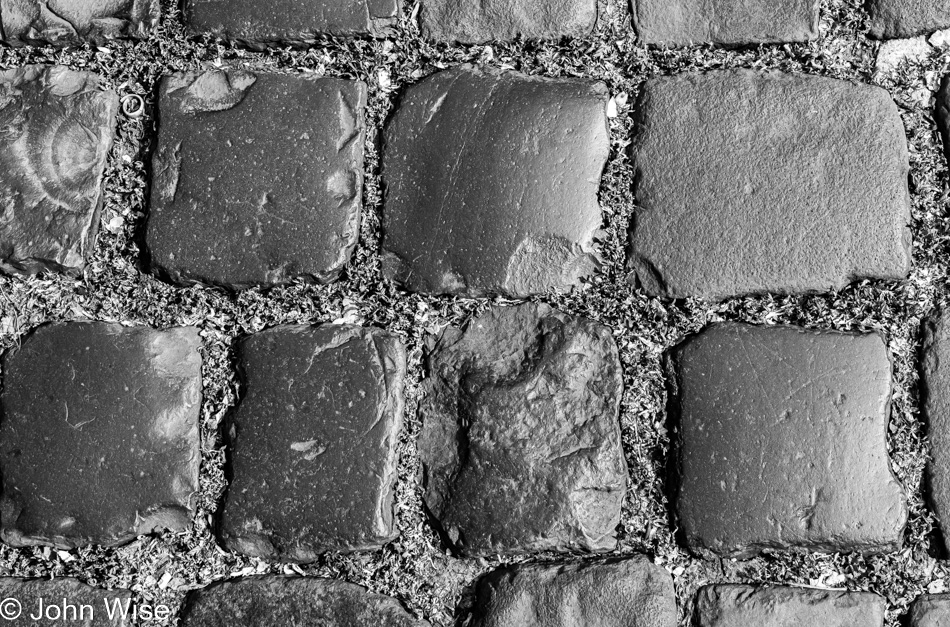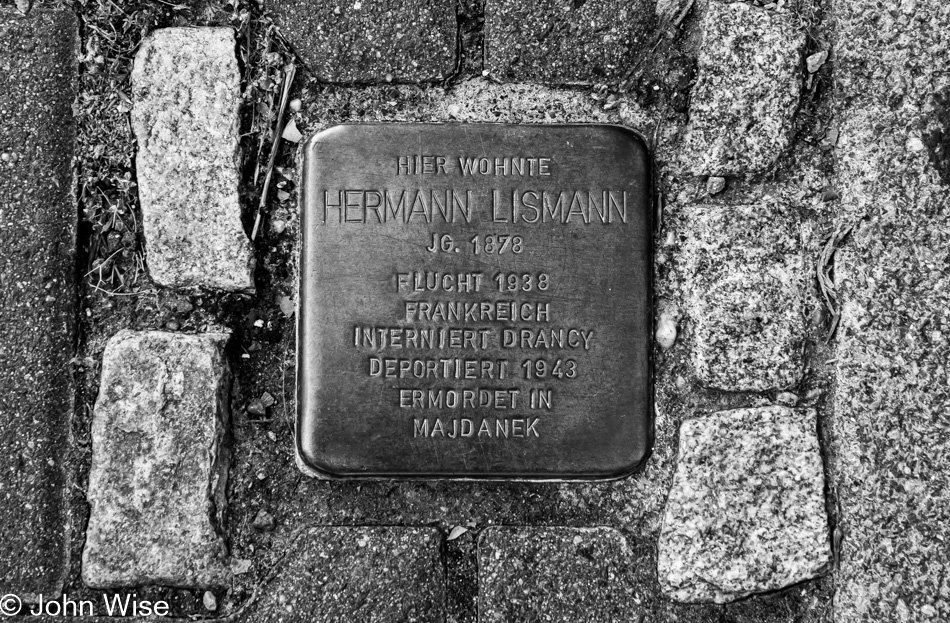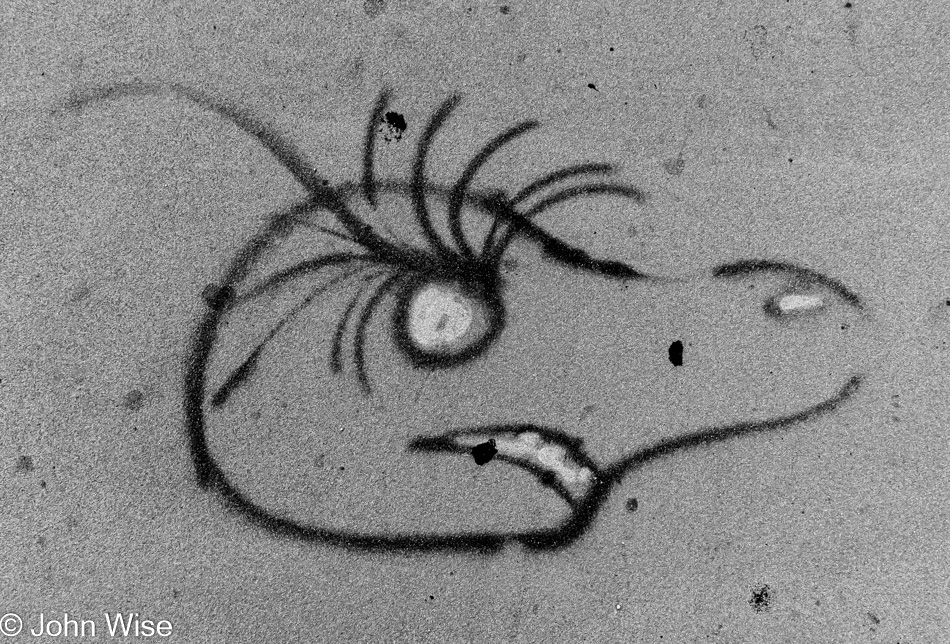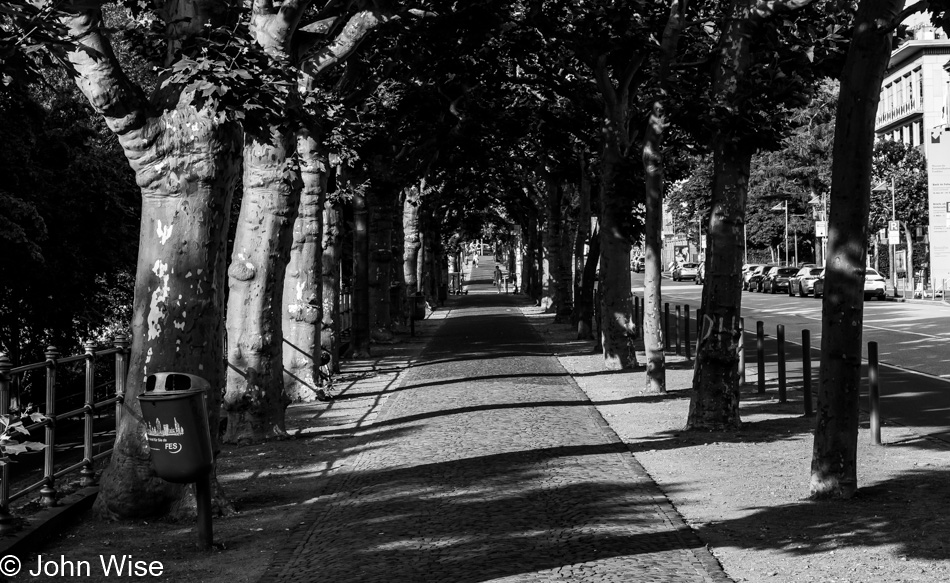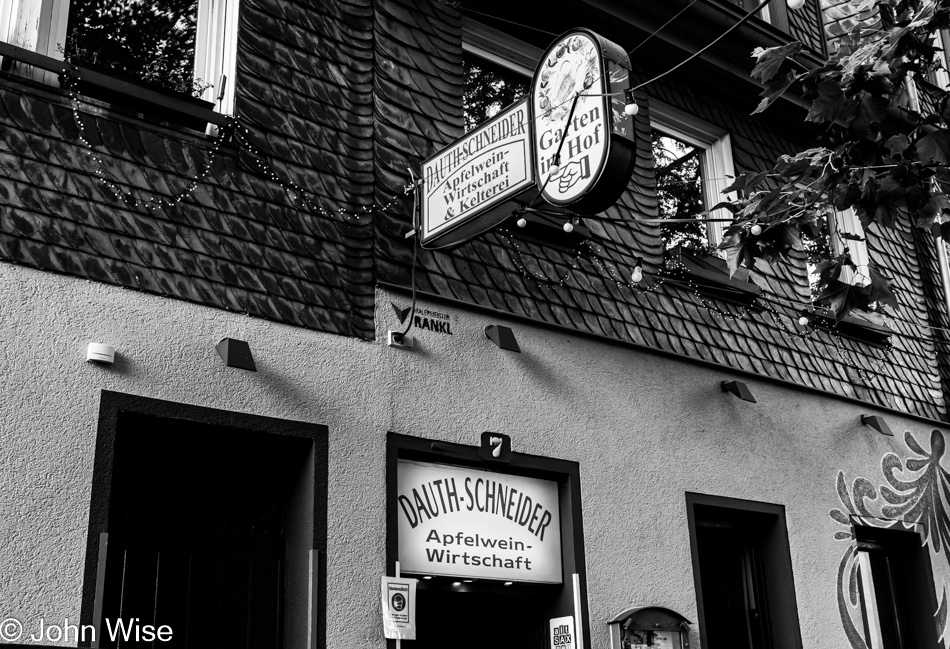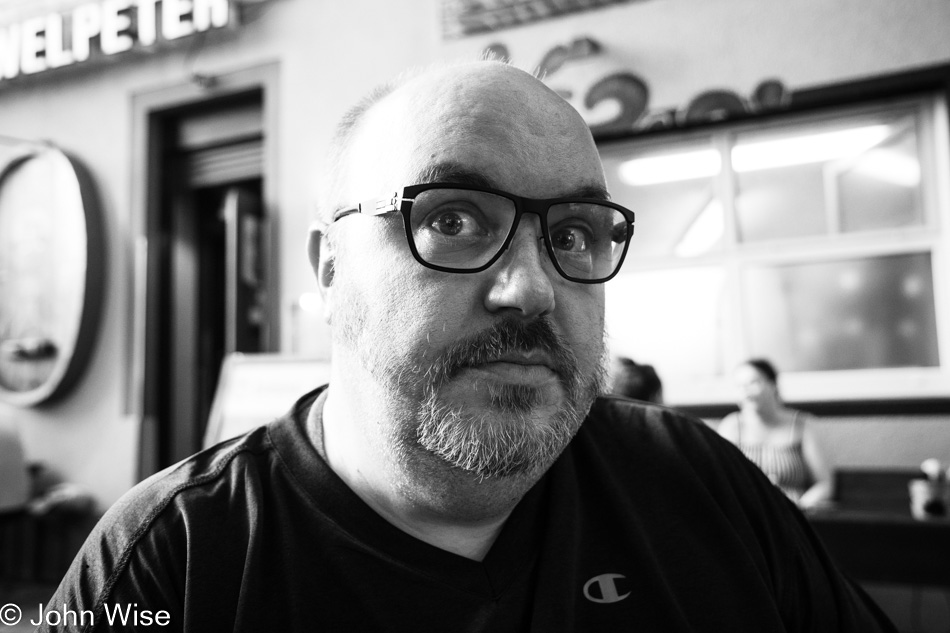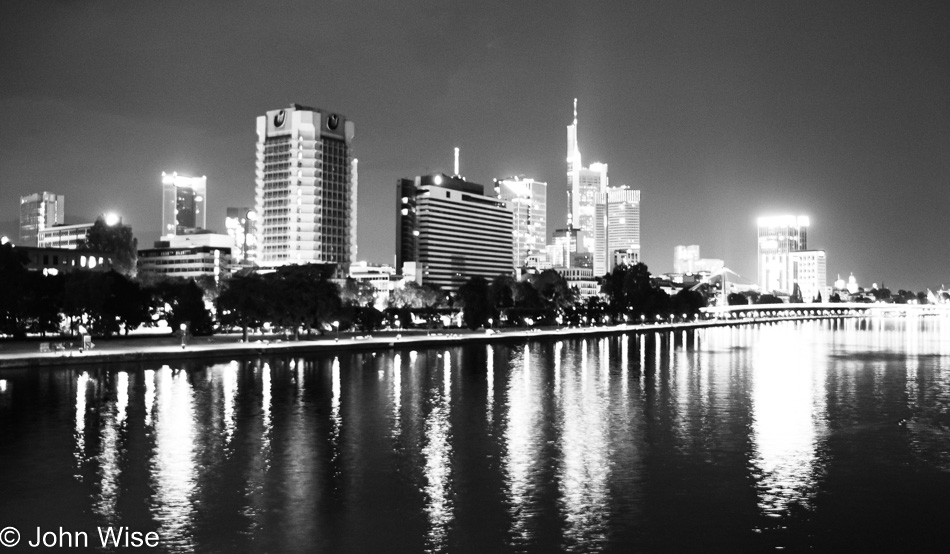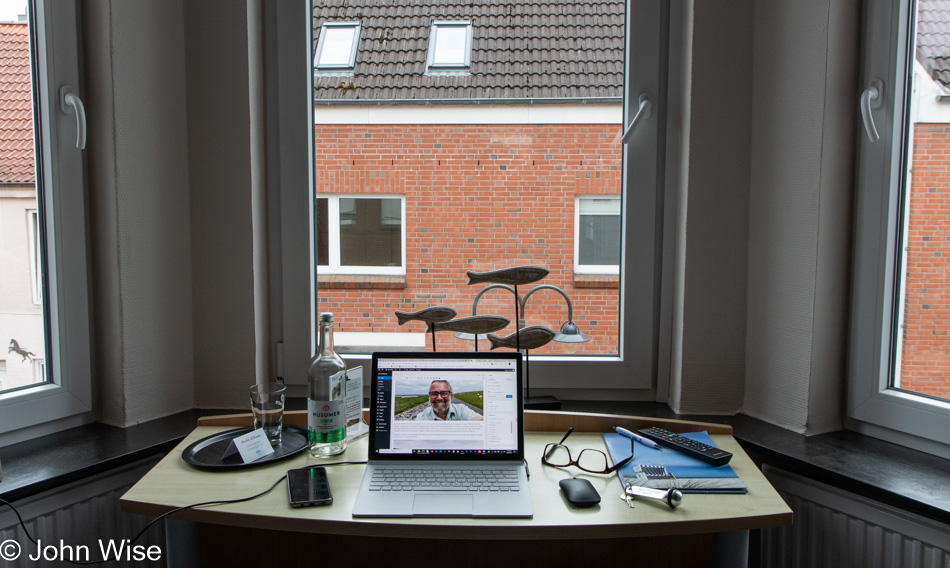
It’s a lazy Wednesday by the Wadden Sea, and a short vacation will come to a finish. Not in a rush of activity but the quiet gray of doing nothing much at all. It’s okay to not be in a hurry, to take refuge in a warm room with the conveniences required for sequestering ourselves, even if for only some hours. Languorous activities such as we are engaged in ask for a bit of mindlessness, and maybe the act of writing violates those principles of inactivity, but staring at the ceiling or the inside of my eyelids doesn’t feel like an option either. So I write of the past from the future of when said things I write actually occurred.
This theme of photographing the space where I commit my thinking to bits represented on a screen should have been given more thought many years ago because, more than selfies, I would have quite the collection of locations and settings where I’ve sat down to this exercise of trying to explore wit, cynicism, spleen, awe, love, and delight.

This is the door to the house where Theodor Storm’s parents lived. I’d guess that he lived here as a child. With Storm arguably the most important person in history to hail from Husum, no wonder the small town recognizes him. Maybe I’d also consider Nicolaus Bruhns, who was said to have been an influence on Bach for celebration, too, if he actually had that influence. What’s not in doubt is that Bruhns studied under Dieterich Buxtehude, which lends some gravity to this person who only lived a short life of 31 years back at the end of the 17th century.

I certainly didn’t try this masterpiece as that might have ruined my admiration that something so beautiful was on display, tempting my sense of culinary wonder. It will forever hold a place in my imagination that this may have been the greatest-tasting cake ever created. I didn’t even bother to note the location where I saw it as I hope to forget just where it was. Should I ever return to Husum and have the burning desire to finally try one, maybe I’ll learn they no longer make this work of art, but it can live on here forever.
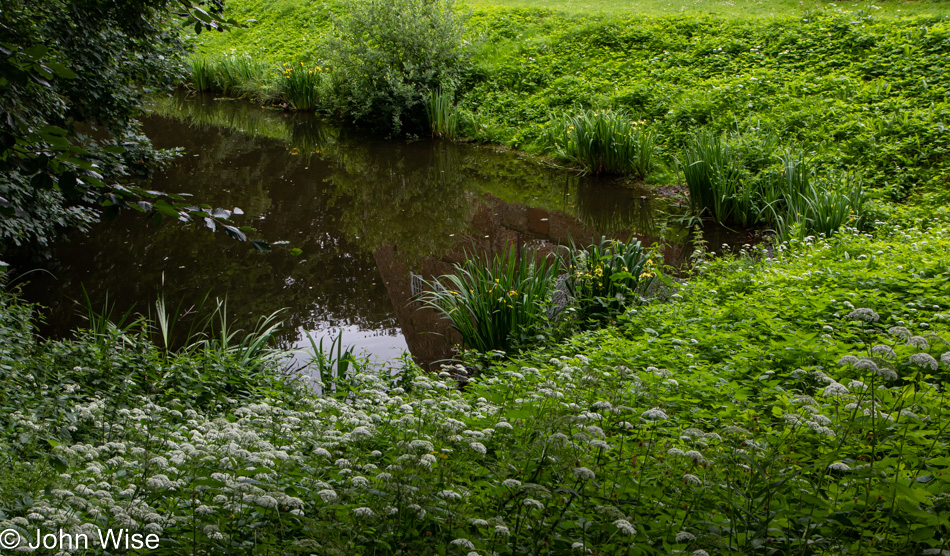
Friendliest looking moat I’ve ever seen. Klaus and I hiked up the mountain to Schloss vor Husum (or Husum Castle). That’s a lie because there are no mountains anywhere near here, but the quite small castle actually does exist. Also, this is not a moat; it’s just a lush pond.
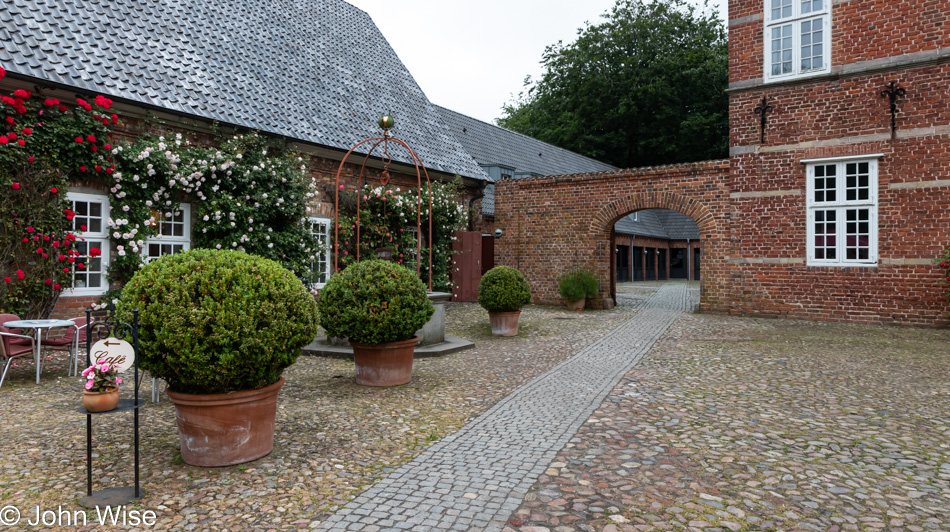
This is a corner of the castle that must represent the rest of the structure. I would have liked to photograph the place in greater detail, but some groundskeepers had red tape up to cordon off the area directly in front of the main part of the buildings so they could get some maintenance work done.
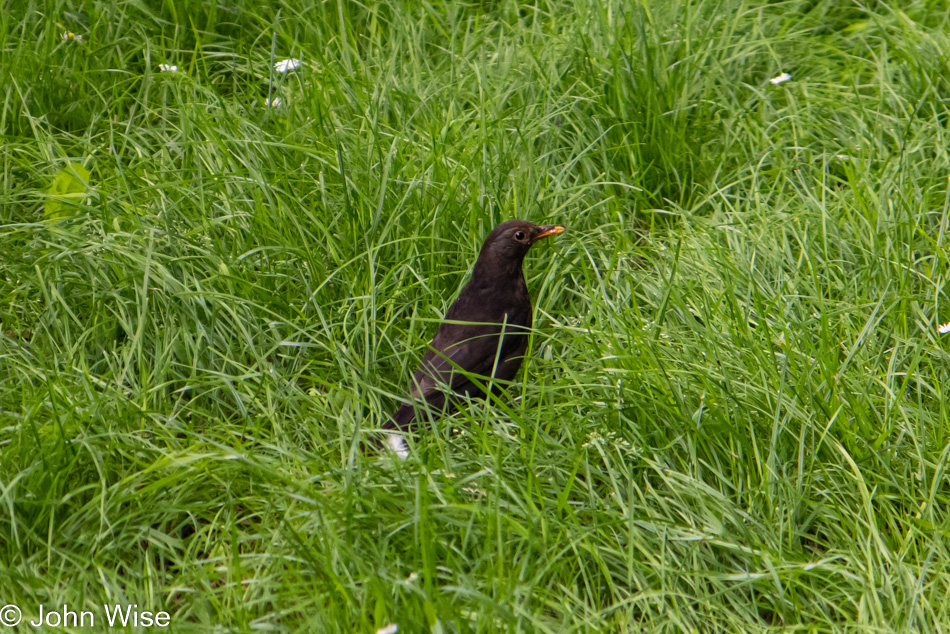
Bird photographer, I’m not (cue a chorus of “Photographer of many things you are not, John”), but that’s not going to stop me from trying. Heck, I don’t really care about this bird, for that matter, but it will do as my stand-in for the many birds that were out of sight but not out of hearing range. This makes me wonder where Rammstein was when they penned the words for Ohne Dich and the lyric Und die Vögel singen nicht mehr (Translation: And the birds no longer sing). Obviously, they weren’t in Husum.
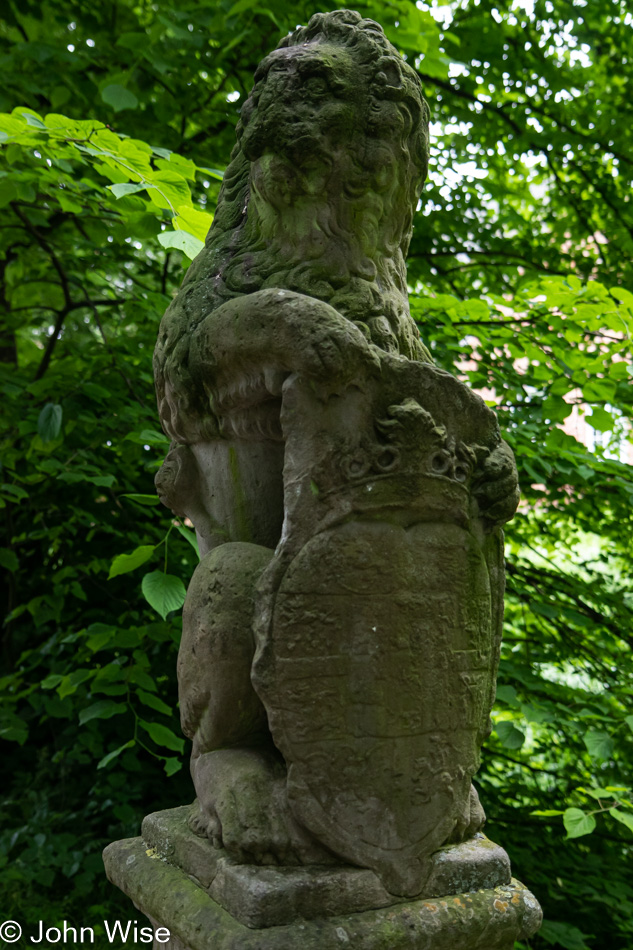
Time has eaten the lion’s face and will ultimately eat mine, too, except mine will likely be a horrific sight as it’s happening.
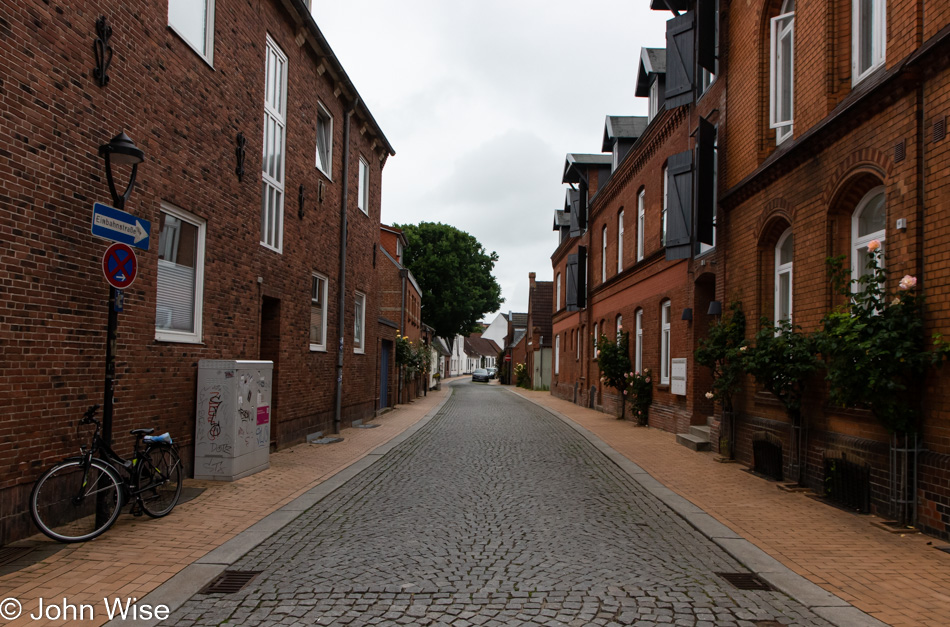
I’d guess this street looks much like it always has and that Theodor Storm and Herr Bruhn would recognize most things aside from the electricity box and the cars.

The house Storm lived in for a short period doesn’t open until 2:00 or 40 minutes before we depart. Like the castle, Caroline and I now have a few things to return to Husum for.
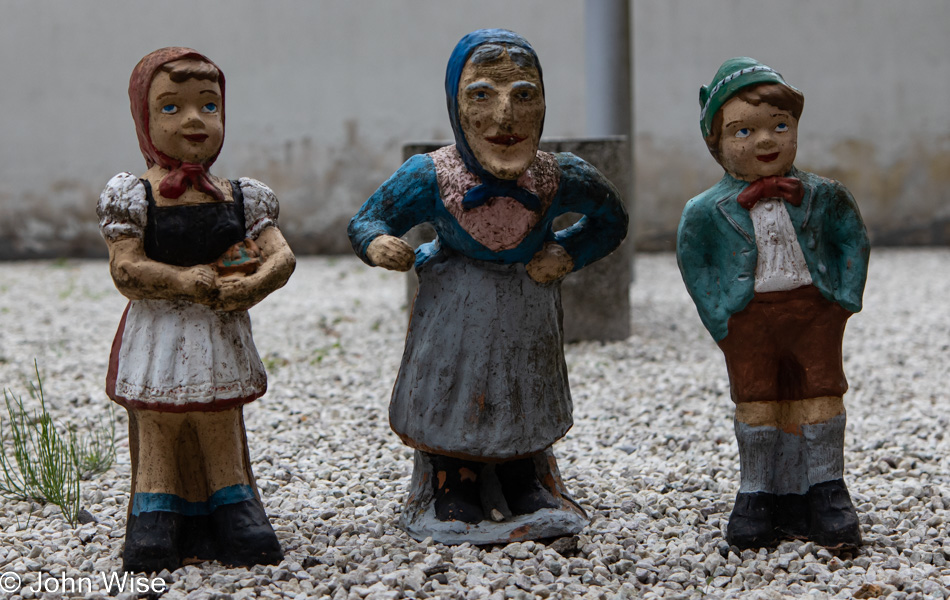
These three ugly gnomes were in a sideyard with no explanation of their purpose. Maybe they keep the spirit of Storm alive?

Time for more food, more fish, more Bratkartoffeln, more mineral water, and a very nice server at Gaststätte Tante Jenny.
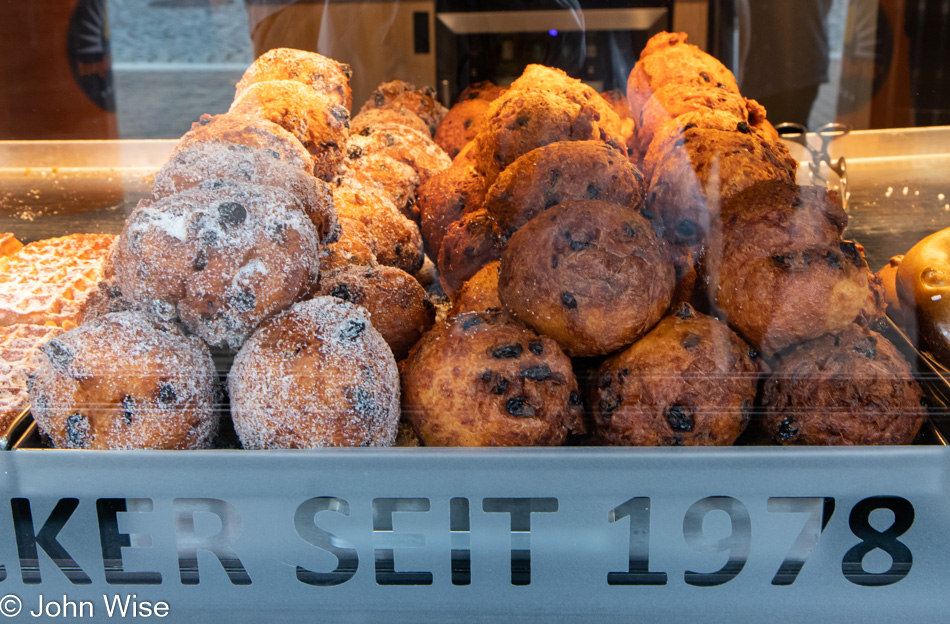
North-Friesische Futjes from Waffelgut sure looks like orange-sized balls of fried dough, er um, donuts, but who am I to turn up my nose to the strange delicacies of ethnic peoples when I’m visiting their lands? Buying five was .50 euros cheaper, so I played it safe and only got two with sugar and the other three plain.
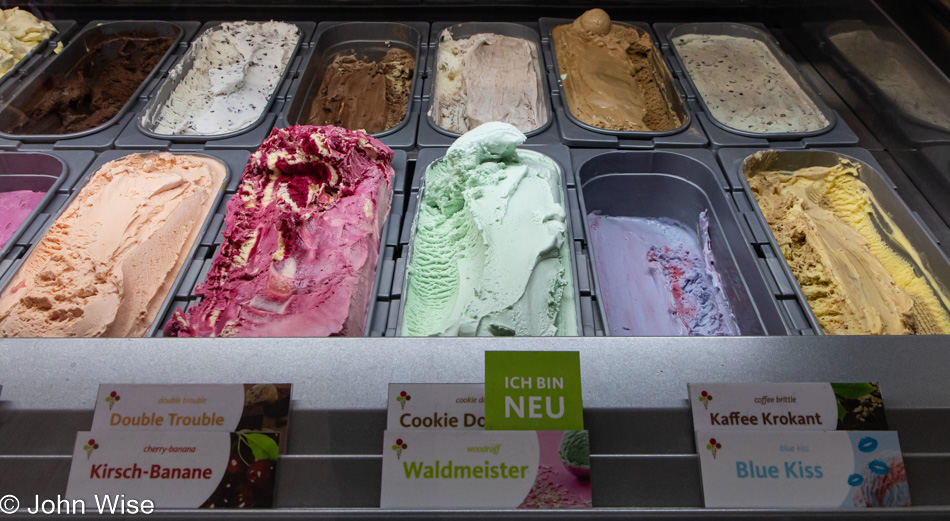
Don’t go thinking I’m eating lunch, futjes, and then ice cream; the donuts are for the train. The Waldmeister and hazelnut ice cream were to go with my coffee. Now I’m ready to get on a train that’ll take about 8 hours to bring us back to Frankfurt. By the way, I didn’t really want the Waldmeister ice cream, but I knew that once Caroline saw this photo, she’d be asking how it was, so I had to oblige her. To be honest, I can’t say I really enjoyed it, though I did finish it.

Only two trains will be required to get us home; this one goes to Hamburg and the next one to Frankfurt. I met a man from Yorkshire here on the platform in Husum who’s been living in Erfurt for the past 20 years; he was waiting for the train so he could photograph the two engines pulling our transportation to Hamburg. Something about the diesel engines intrigued him, but I didn’t have time to learn more as the train was on approach, I stepped away so he could focus on the matter at hand and not me.
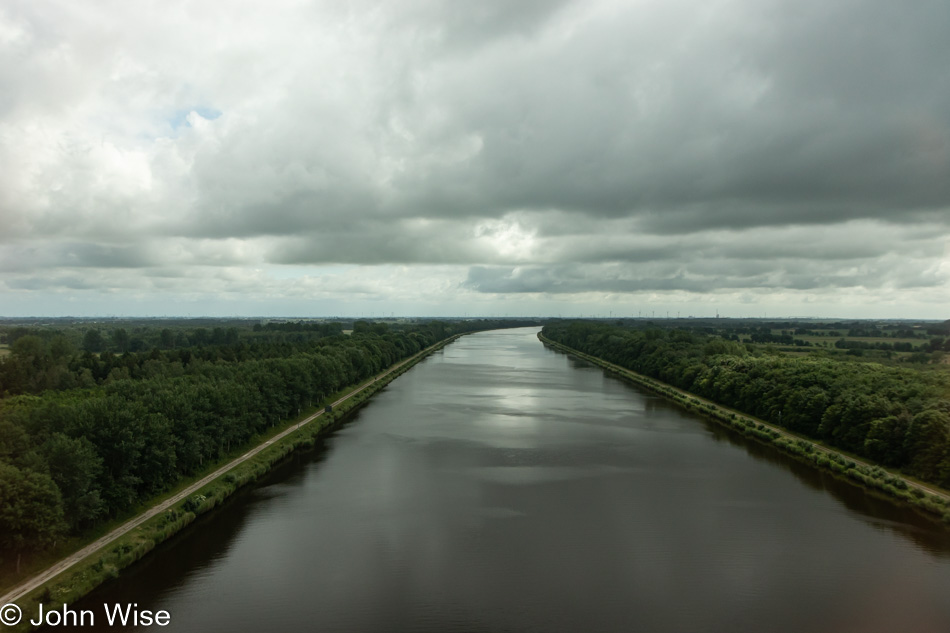
I don’t know where I’m at, and if I think deeply about that, I may never really know where I’m at other than with myself in a bunch of situations that defy believability. I mean, how is it that I’m on a train cruising at 100 mph across Germany, and in less than a week, I’ll be having coffee with Ed Tankersley again at King Coffee on Union Hills Avenue in Phoenix, Arizona? Ah, did you pick up on that? I can’t confuse who I am with where I’m at, but how many times do I make such wrong-headed comparisons where I count on my wife finding and correcting my blunders? Is that part of the basis of surrealism or absurdity? But John, you stated you didn’t know where you were. Oh really? My inference was about where I am inside and where I am when I’m somewhere else other than the John, who is talking to Ed, Klaus, Caroline, or anyone else really. The John that is writing this is using his fingers to express a voice that is never heard by anyone but myself. My writing sounds like me to me, but does this version of John sound like the one you know? I know where my body was when I wrote this, but the person who has been changed in subtle ways over the past few days hasn’t been realized fully yet. Or maybe I have been, and I’m mostly just the person I am and always have been as I write this.
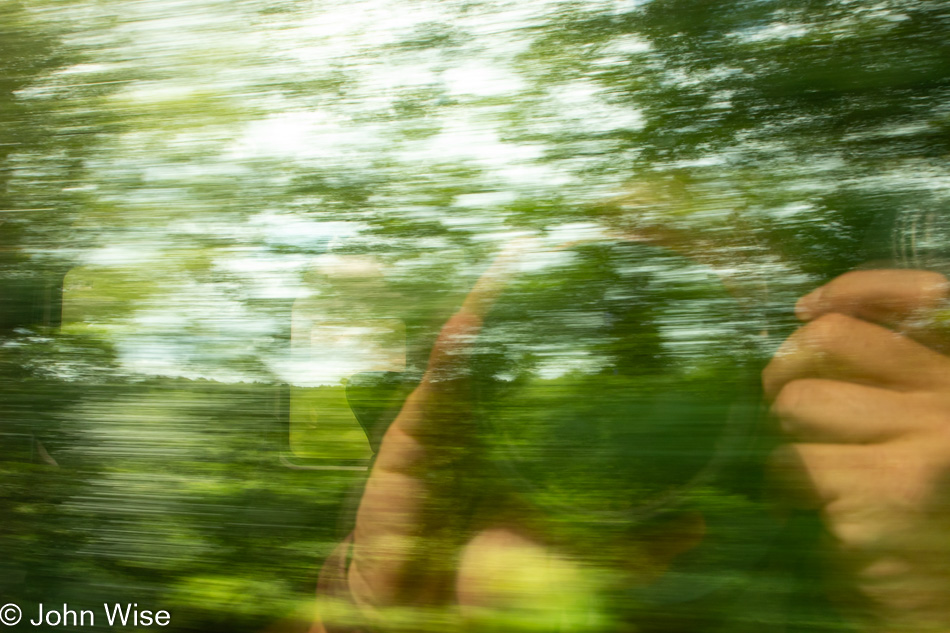
I didn’t travel 1,300 kilometers to be the same person I was before this journey that has taken me to the tidal mudflats of northern Europe. I’m looking for something. Did I find it? I never know for certain as it doesn’t present itself as a bookmark, an artifact, or even a carbuncle of oozing knowledge. That would be a thing, wouldn’t it? Every time you gain something when learning, you move one step closer to appearing as Baron Harkonnen in Dune. Better would be sprouting a new branch; maybe trees used to be humans who learned that it was better to gain knowledge while reaching into the sky and enjoying a life of standing in place, taking it all in.
Maybe I’m always looking back at myself, and the person or realization I don’t find is lost in my inability to know myself in those places. I visit cathedrals, forests, oceans, rivers, cities, and coffee shops, always searching for the essence of self and place, trying to find a clear image of the person who was slightly different yesterday but in many ways the same as I’ll be tomorrow. I believe I know that I’m not outside nature, but my integration with it is a blur of deciphering as an ever-changing world goes by that doesn’t allow for fixing on points that might ground me in certainty. And so I keep on this path of discovery, hopeful to find whatever that something is.
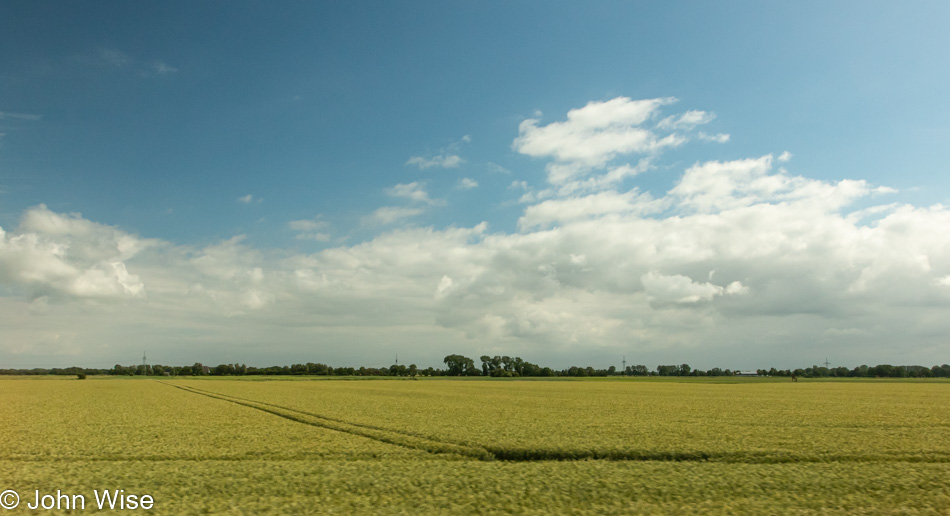
Maybe the clouds are gods floating overhead, free to travel the earth and come and go as they please. Condensed water drops hold the power to deliver the most valuable resource to humans in the form of clean water that nourishes our green plants, so they produce our oxygen. A symbiotic system that is not reliant on the idiots in between. What about those of us who are between places such as here on this train, being neither here nor there? I’m busy using resources, not producing anything, ah but is producing information that may at some point be construed as knowledge have value? That’s not up to me to decide; only history and those with an interest in the past make those decisions. Then, in an age where information is akin to countless fields of wheat, we speed past and find it impossible to inventory and assign value to this commodity that will rot in the field if not tended to. I have to accept that every word and every letter written here just might be one kernel of wheat out of 22 on one of the five heads of a single plant 62 meters away from the train in a row I cannot identify. An ant could come by taking that kernel I’ve left to its nest, and in a week, all that I contributed would be gone. The grains I leave behind will ultimately disappear, having been transformed into something else.
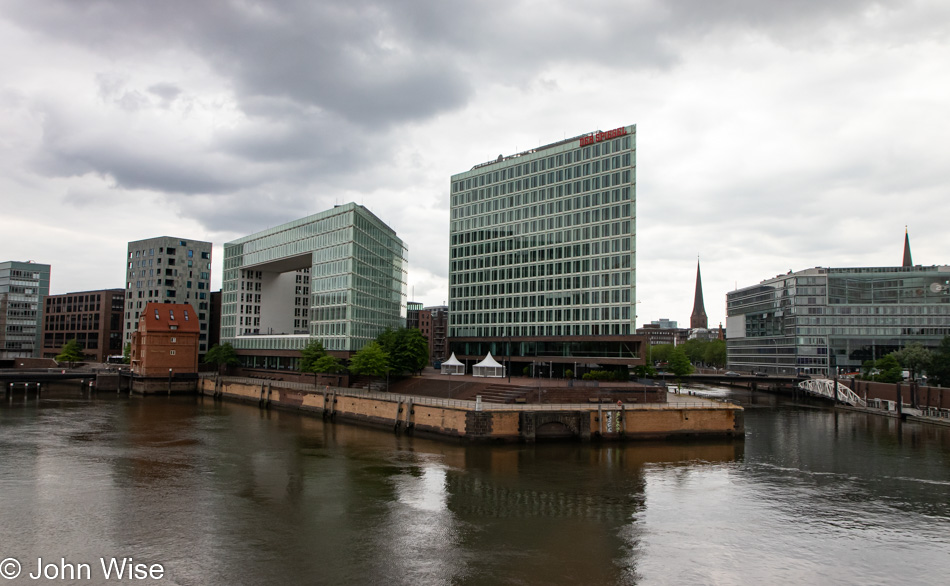
We’ve reached Hamburg, and again, we are playing musical trains as we jump from track to track as flexibility is required to move so many trains through a busy system. We’ve still not seen the new Elbphilharmonie, nor is it in this photo, but someday Caroline and I will visit the hall, which is one of the largest concert venues on earth.
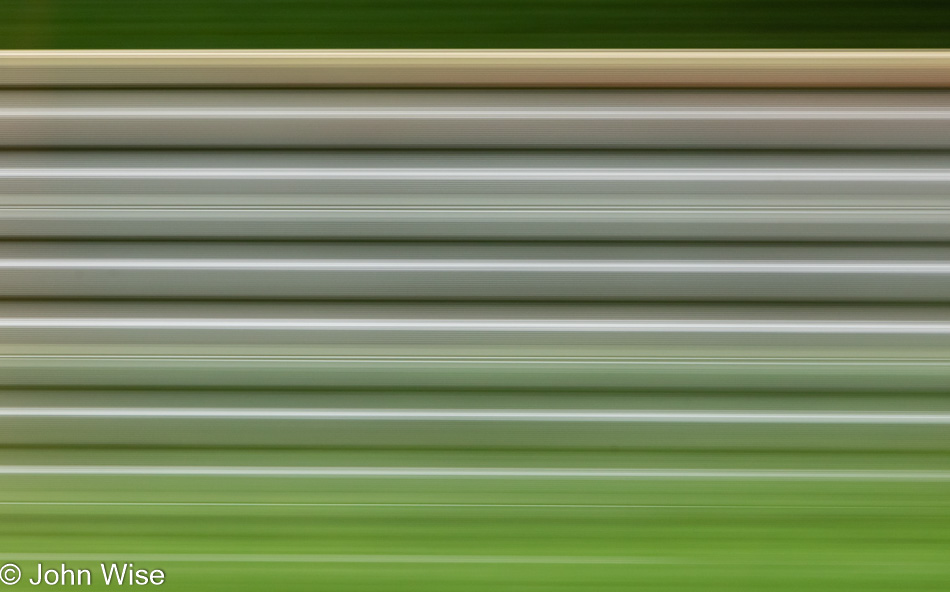
We passed through Uelzen and Celle, both of which I’d never heard of. They went by in a blur like so much fence, graffiti, and wheat the train passes at terrific speeds.
Note: after I returned to Frankfurt, I looked up Celle and have now put it on the list of places for Caroline and me to visit. As for Uelzen, while they have an interesting main train station, that seems like that’s about it.
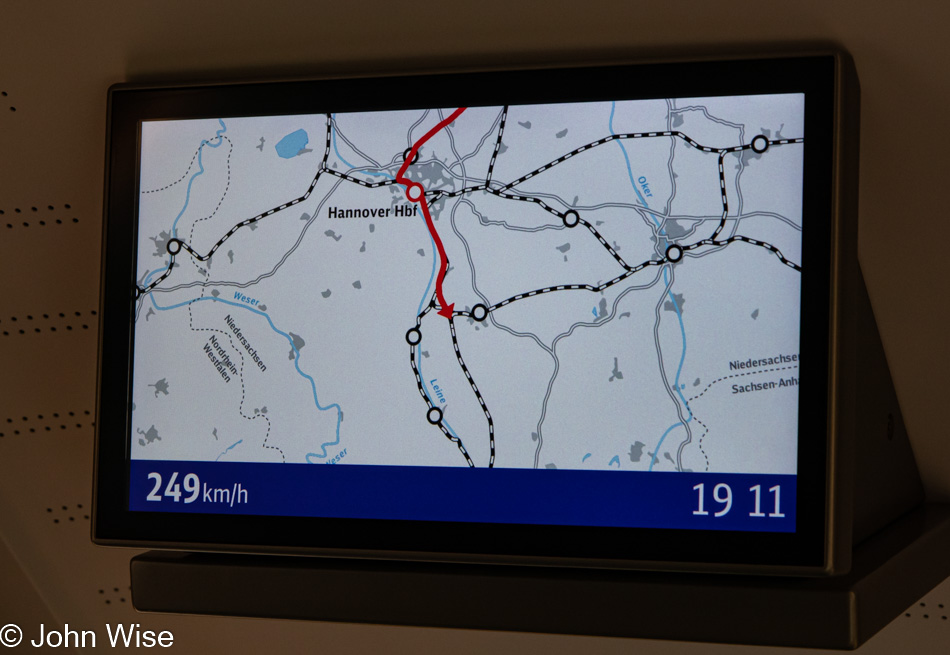
We have stopped and taken off again as we move down the track at nearly 250 kilometers per hour or 150 mph away from Hannover. With less than three hours remaining before reaching Frankfurt, it feels like this journey will quickly come to an end.

You don’t know how much you love the sun and mountains until you’ve left the flat gray area of somewhere that sees little to nothing of these two aforementioned attributes.
I’m reluctant to move on to the next image as I have nothing else in the camera yet, and my traveling south is being occupied by putting these words up. If I were to pause, might I get sleepy? So I must find something in the silhouette of the land and dramatic clouds that inspires me to babble on. Note that it’s now taken me five hours to write the 1,693 words I’ve written so far (pre-Caroline edits, of course), which, writing this statistic, makes me open the calculator to see that I’m writing about six words a minute minus eating, drinking, and photography breaks. That probably means I’m getting closer to seven words a minute when I am writing. If I am to occupy myself for the next couple of hours, I better slow this blistering pace down.

Shadows are creeping over the landscape, especially as I set in to write for this photo, for it is a good 30 minutes after I snapped this shot. We just passed Neu-Eichenberg with a nice old train station about 40 kilometers from Kassel and our last stop before Frankfurt. I just finished reading about the history of the Eichenberg Station. Should you be interested in what it looks like and its history, follow this link to Wikipedia. And with this, I can only share that we are riding into the sunset. Should I find another photo, worthy of inclusion, I might discover more to blather on about. Until then, maybe you too, should just stare out a window at nature or, better yet, take yourself into it.
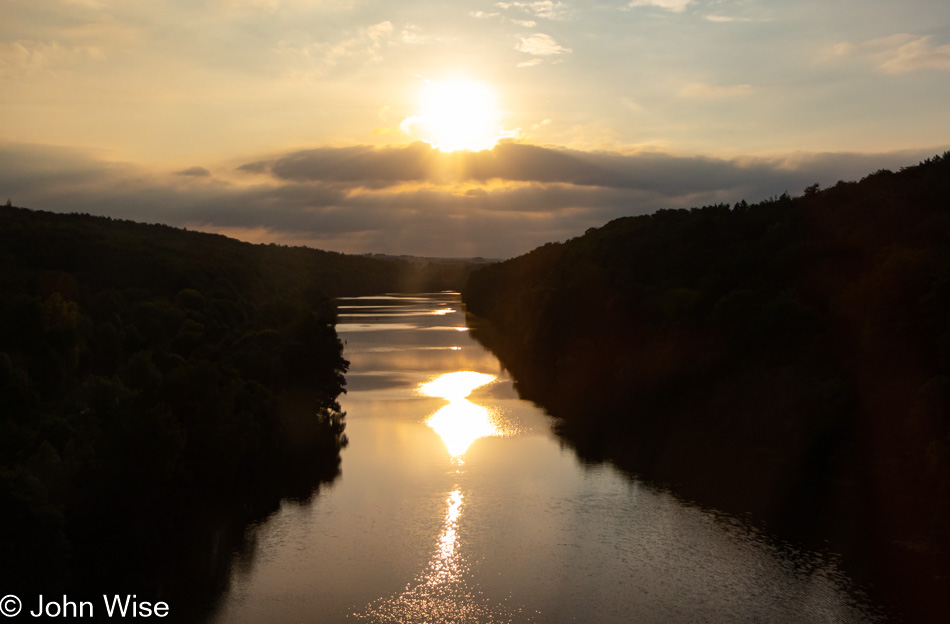
Didn’t have to wait long, and fortunately, I was able to snatch up the camera just in time to grab a photo of the sun setting over the Fulda River that I didn’t think was salvageable as I had a lot of reflection from the window I was shooting out of. But the important parts of the image that tell the story look nice to my eye. It’s 8:30 in the evening as we pull into Kassel. This city was supposed to be one of my side journeys that is surely out of contention for a visit, as are so many others. Paris, too, will have to wait. Maybe when Caroline and I return in the fall, we can find our way down some of these other romantic roads and rail lines.
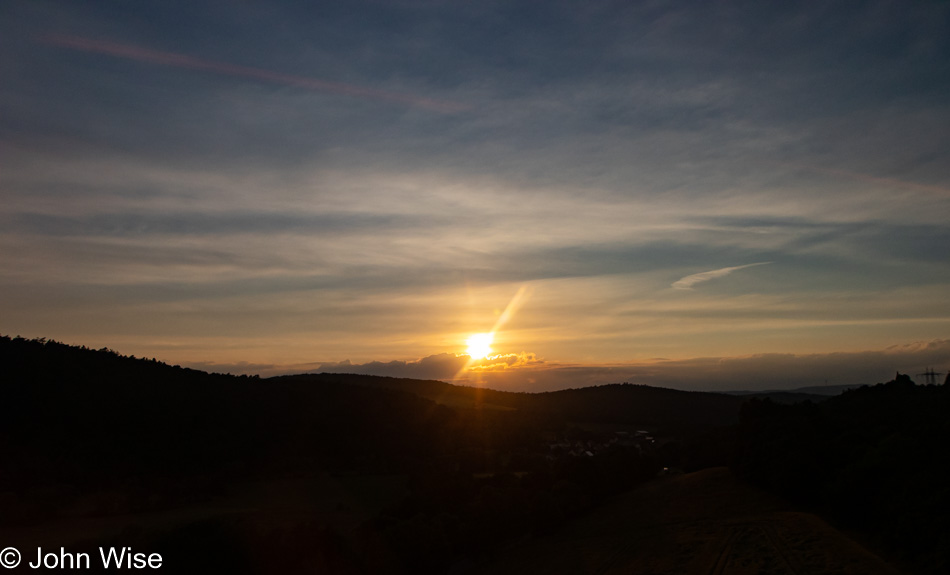
We are quickly running out of daylight during our final hour on the InterCity Express train (ICE) we’ve been on since Hamburg. I should point out that these 8 hours of travel are all the easier as we are sitting in 1st class with fast wifi, no seat neighbors, a table, and a quick ride that doesn’t suffer from turbulence.
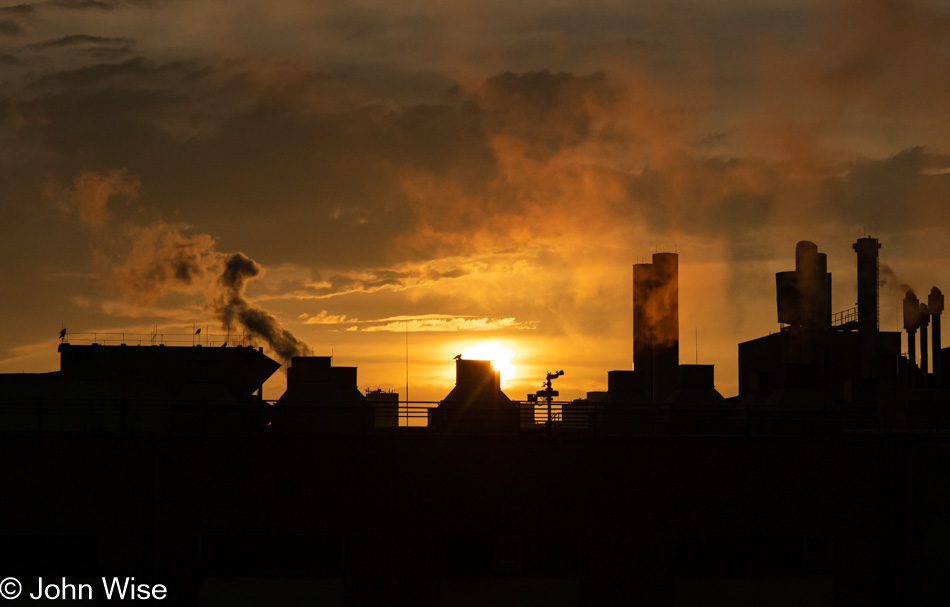
I thought two photos ago that I was done and could just relax into the last minutes on the train, but here we are passing through Fulda, and I spotted some buildings on a distant hill, but as I started snapping photos, this factory sprung into view. That was a win.
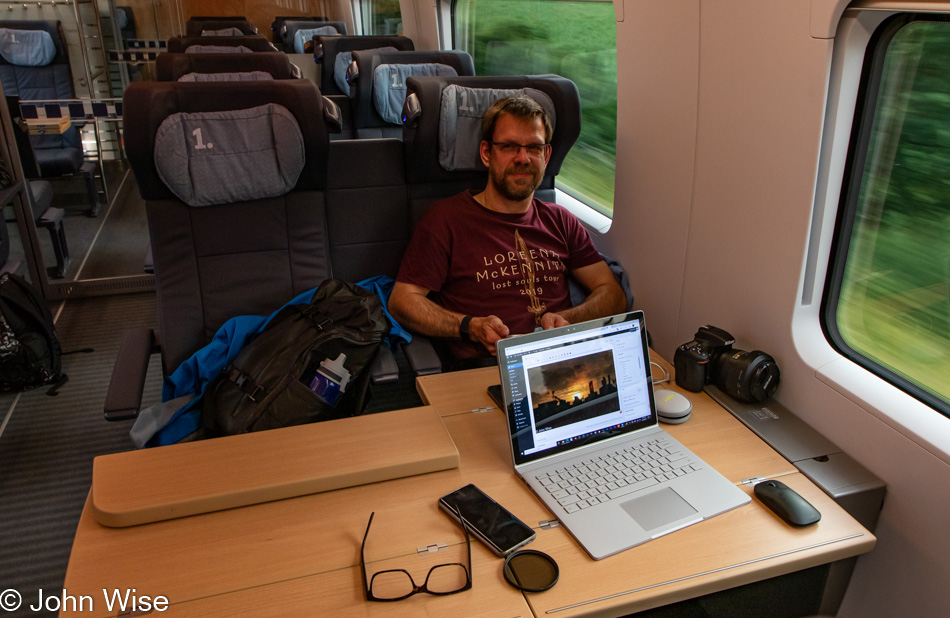
Maybe this is redundant, as I posted an image of my workspace on our way to Husum this past Sunday, but right now, I can’t remember, and I’m too lazy to check. Okay, so I just went and checked, and I took that weird reflection photo in the tunnel a few days ago, but that photo was then; this is now. So, do I sign off figuring I can’t do any better than this, and at 26 photos, this is certainly a long enough blog post, or do I hold out for one more? Just kidding, I’m done. Vacation to the Wattenmeer and all that it included is done.
